Outdoor living keeps gaining importance, and the humble front porch bench has evolved from a simple seat into a space-saving, storage-ready, style-driven centerpiece. Designers forecast bolder colors, integrated tech, and eco-minded materials for 2025, while maintenance experts still insist on twice-yearly deep-cleanings to keep every bench fresh and mildew-free. The twenty ideas below explore timeless craftsmanship and cutting-edge upgrades alike, helping you match any porch size, climate, or décor mood. Choose one concept or mix several—each suggestion pairs practical tips with creative flair so your bench can welcome guests, stash gear, and amplify curb appeal all season long.
1. Classic Wooden Slat Front Porch Bench

A classic wooden slat front porch bench never goes out of style, especially when you choose rot-resistant hardwoods such as teak, ipe, or white oak. Hardwoods shrug off moisture far better than untreated softwoods, so a yearly wipe-down and sparing oil refresh are usually enough to preserve the rich grain. Look for 4 cm-thick seat boards to prevent sagging, and round over edges with 120-grit sandpaper for comfortable seating. Finishing with a breathable exterior oil lets the wood move naturally with temperature changes, reducing the risk of cracks. To anchor the bench visually, stain it one shade deeper than your porch floor and layer on striped cushions for a welcoming, heritage look.
2. Weather-Proof Metal Garden Loveseat Bench
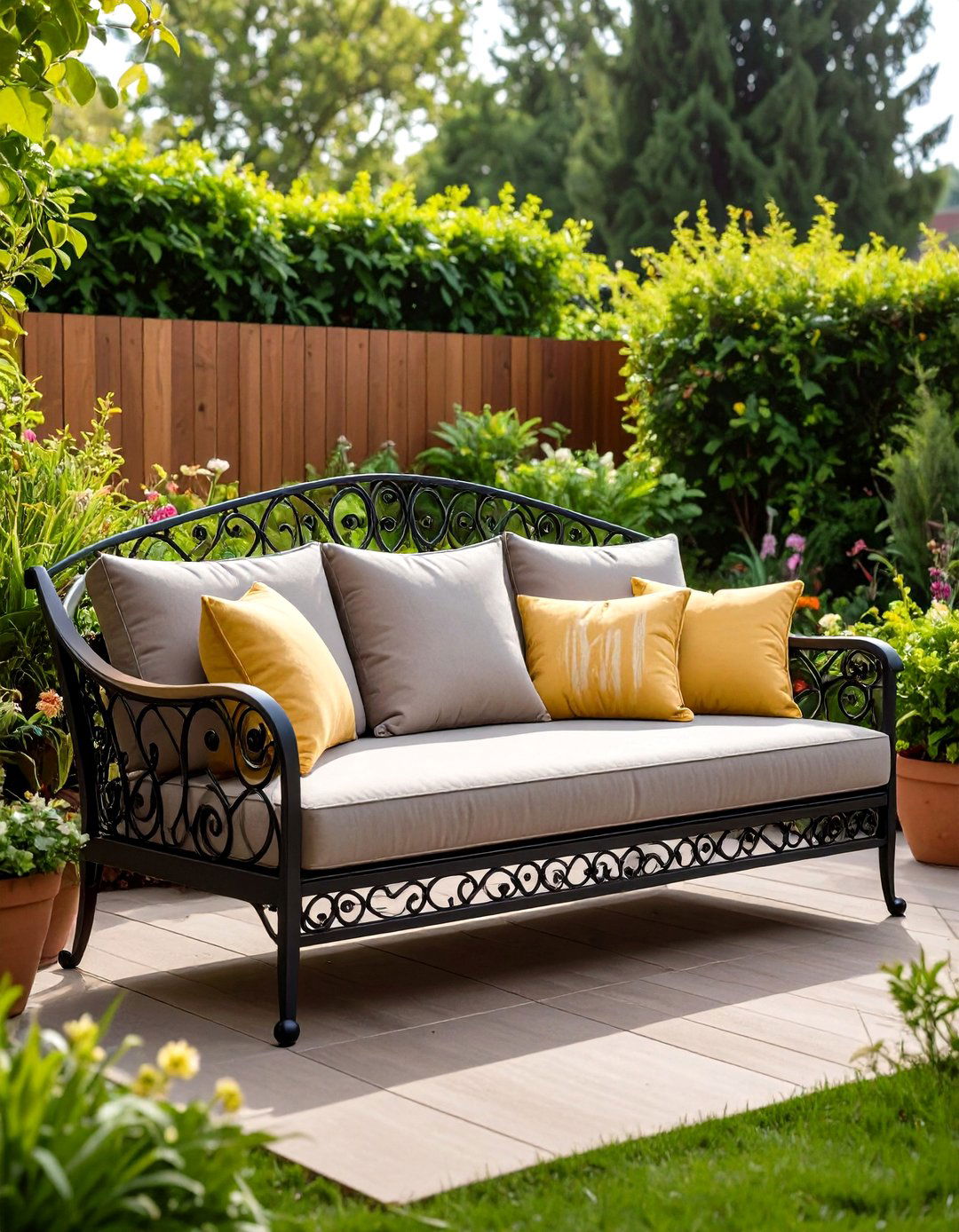
Unlike wood, a powder-coated steel or aluminum garden loveseat bench can handle sudden downpours without warping. Recent outdoor furniture round-ups highlight how modern metal frames now feature UV-stable baked finishes that resist chipping even under intense summer sun. Opt for a gently curved backrest that echoes the scrollwork of vintage wrought iron while weighing far less for easier seasonal storage. Rubber-capped feet prevent rust stains on painted decking, and a quick spray with car-wash soap keeps the finish gleaming. Pair the bench with weather-resistant polyfiber pillows in muted earth tones to soften the industrial feel and tie the look into surrounding potted greenery.
3. Lift-Up Storage Front Porch Bench
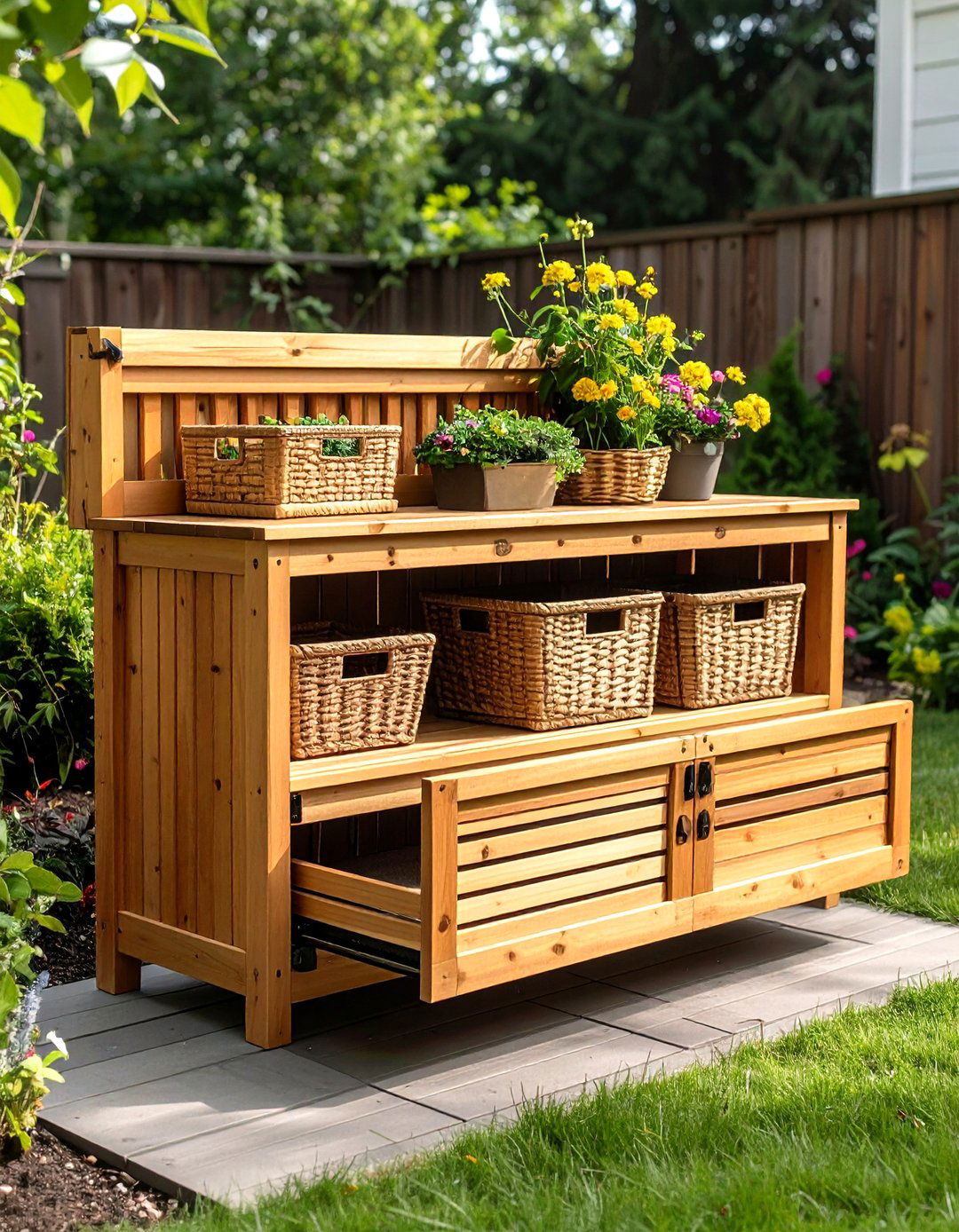
For compact porches, a lift-up storage front porch bench hides shoes, garden gloves, or dog leashes while offering a sturdy 400-plus lb seating capacity thanks to reinforced cedar panels. Choose models with slatted bottoms so air can circulate and keep contents dry. A slow-close hinge prevents pinched fingers, and silicone gaskets around the lid edge stop wind-driven rain. Coat interior panels with clear water-based polyurethane for extra moisture protection without adding odor. Inside, use modular baskets to separate kids’ toys from grilling tools, then label them for quick grab-and-go convenience during busy mornings.
4. Built-In Corner L-Shaped Bench
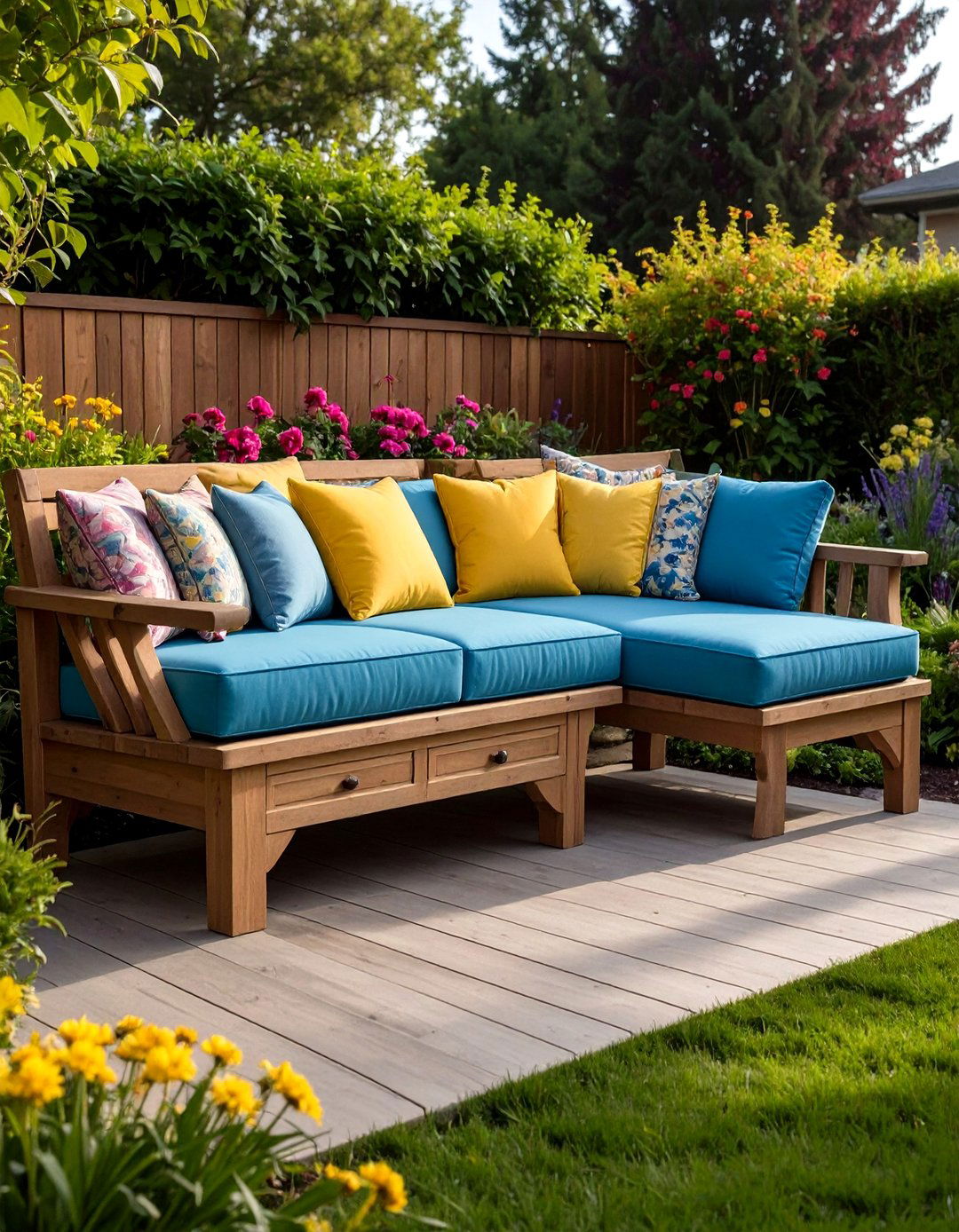
Take advantage of an underused porch corner by installing a built-in L-shaped bench that doubles seating without crowding the walkway. DIY guides show that framing each leg with standard 2×4s and fastening the back to the porch railing creates a rock-solid anchor in a single weekend. Opt for 15-degree backrest angles to promote relaxed posture, then top the seat with 5 cm-thick foam cushions wrapped in outdoor acrylic fabric for easy cleaning. Paint the frame the same color as the porch trim so the bench feels architecturally integrated, and tuck slim storage drawers beneath the seat to hide citronella candles and spare plant pots.
5. Rustic Reclaimed Barnwood Front Porch Bench
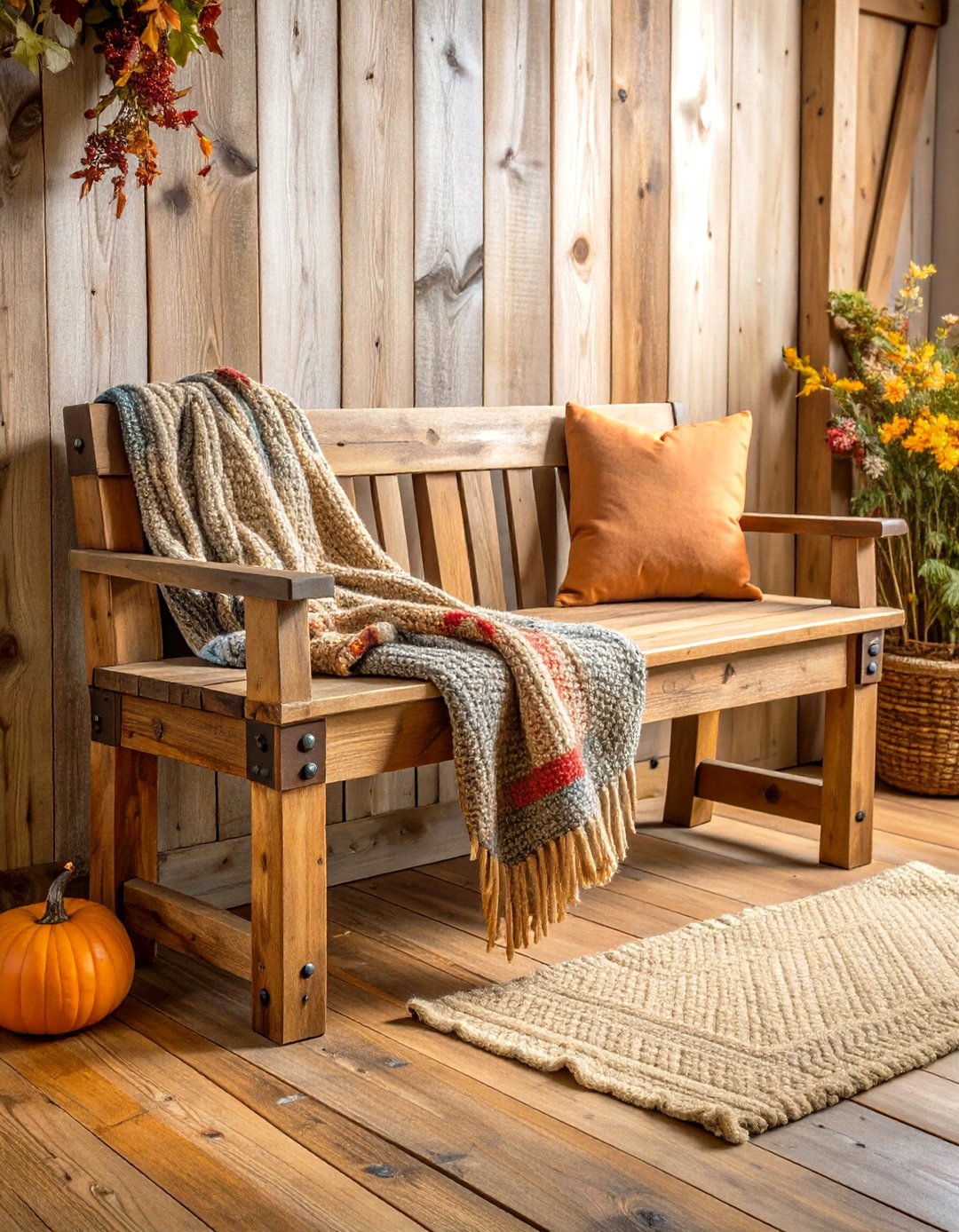
A rustic reclaimed barnwood front porch bench tells a sustainability story while delivering rugged charm. Dense aged timbers—often old-growth pine or hemlock—already carry a weather-proof patina; just brush on two coats of matte exterior sealer to lock in the character and prevent splinters. Add cross-buck braces under the seat for vintage farmhouse vibes, and use black hex-head bolts rather than hidden screws so fasteners become part of the aesthetic. Finish by styling the bench with chunky knit throws and galvanized planters to echo the salvaged theme without tipping into clutter.
6. Adirondack-Style Porch Bench in Recycled Plastic
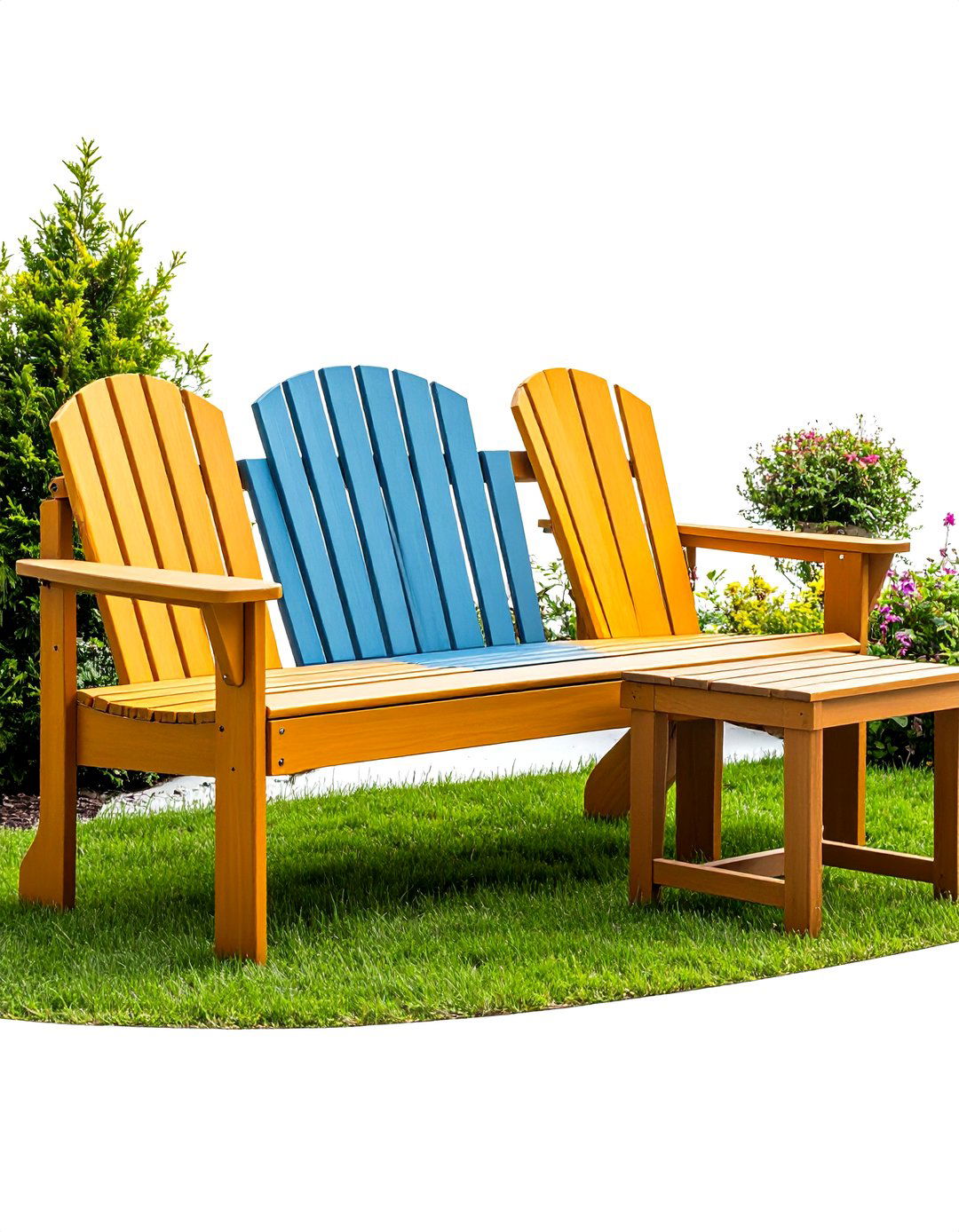
With its wide armrests and laid-back silhouette, an Adirondack-style porch bench made from recycled HDPE offers the comfort of classic lake-house seating minus the yearly sanding. Modern recycled plastic resists fading, cracking, and pests, making it ideal for humid or coastal climates. Color pigments run through the material, so a quick soap-and-rinse restores the original hue. To elevate the look, choose earth-toned hardware that blends into the slats, and pair the bench with a matching side table to hold iced tea during warm evenings.
7. Mid-Century Modern Tapered-Leg Bench
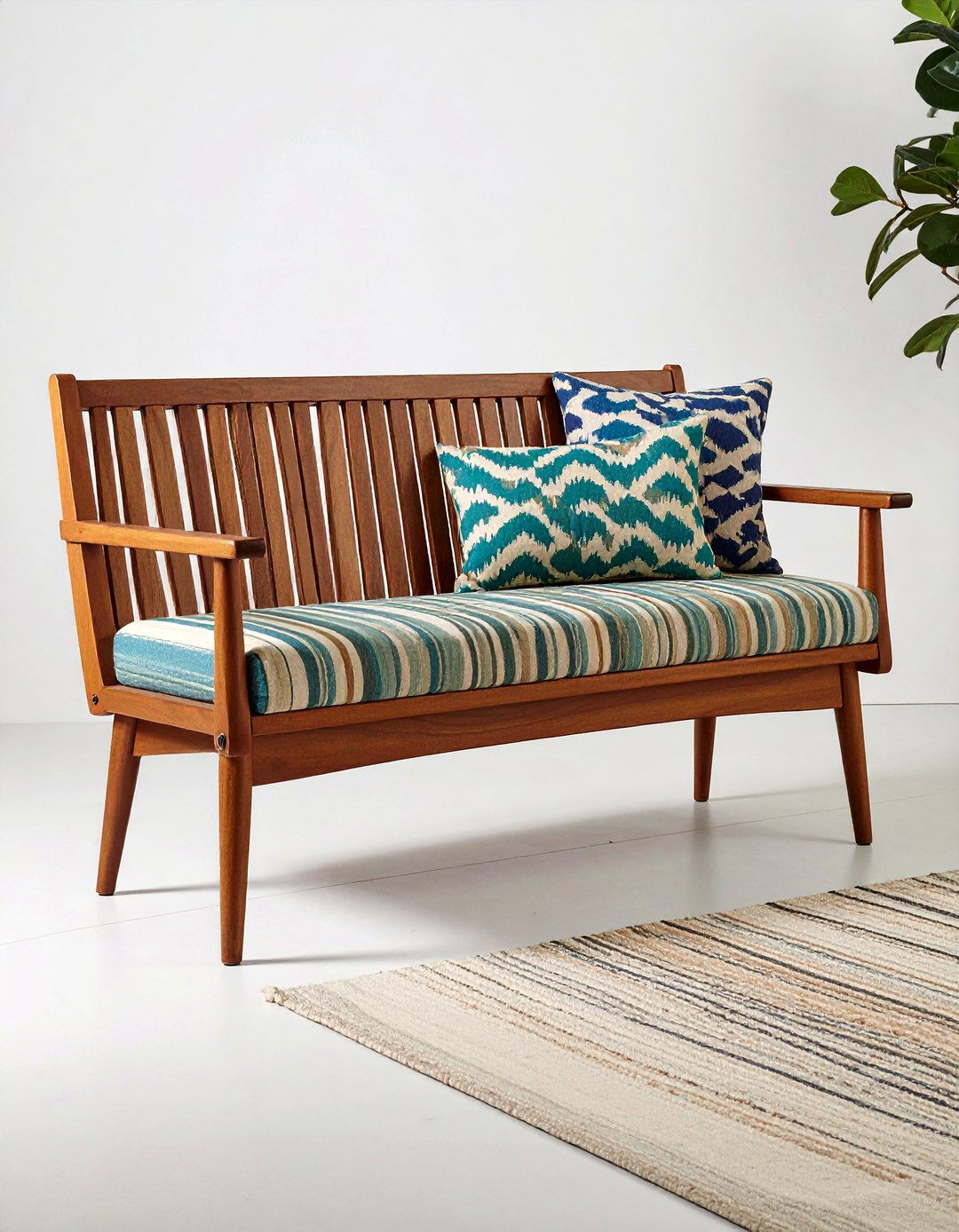
For a sleek statement, a mid-century modern front porch bench with tapered acacia legs and a simple slatted top nods to 1960 s design while using sustainably grown hardwoods now widely available at budget-friendly prices. Curated sales of outdoor furniture spotlight powder-coated brackets that let the thin legs support surprising loads without wobble. Apply a natural-tone exterior oil to highlight the tight grain, then layer a single bolster cushion in a retro geometric print for instant period charisma.
8. Convertible Bench-to-Picnic Table
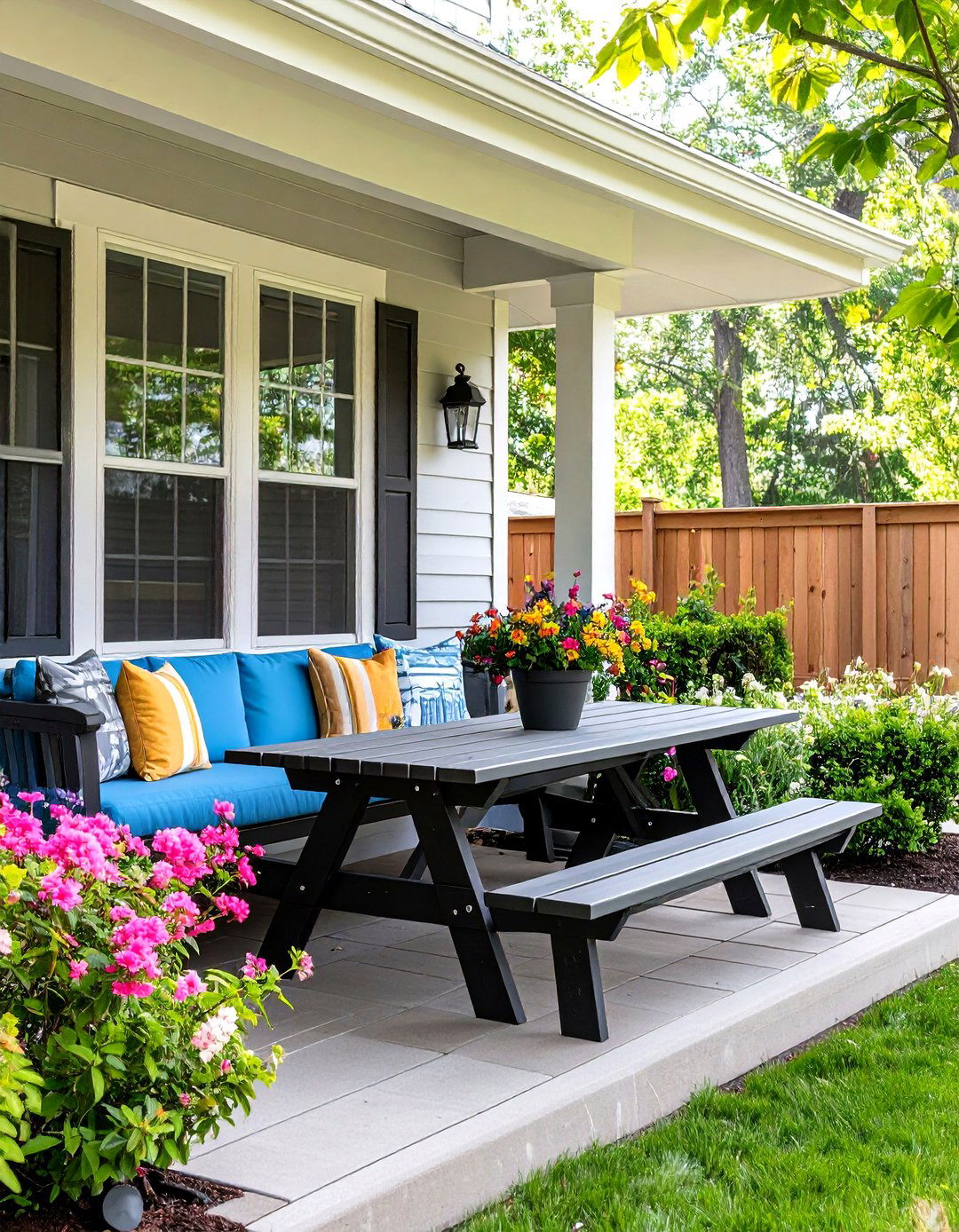
Take multifunction to the next level with a convertible front porch bench whose backrest flips to form a small tabletop—pair two units for a six-place outdoor dining setup. Injection-molded resin frames withstand rain and sun while staying light enough for one person to fold and move. Look for stainless-steel pivot pins that won’t seize, and grease them annually with food-safe lubricant. Add hook-and-loop straps under the tabletop to secure a wipe-clean vinyl tablecloth whenever you switch to meal mode.
9. Hanging Porch Swing Bench
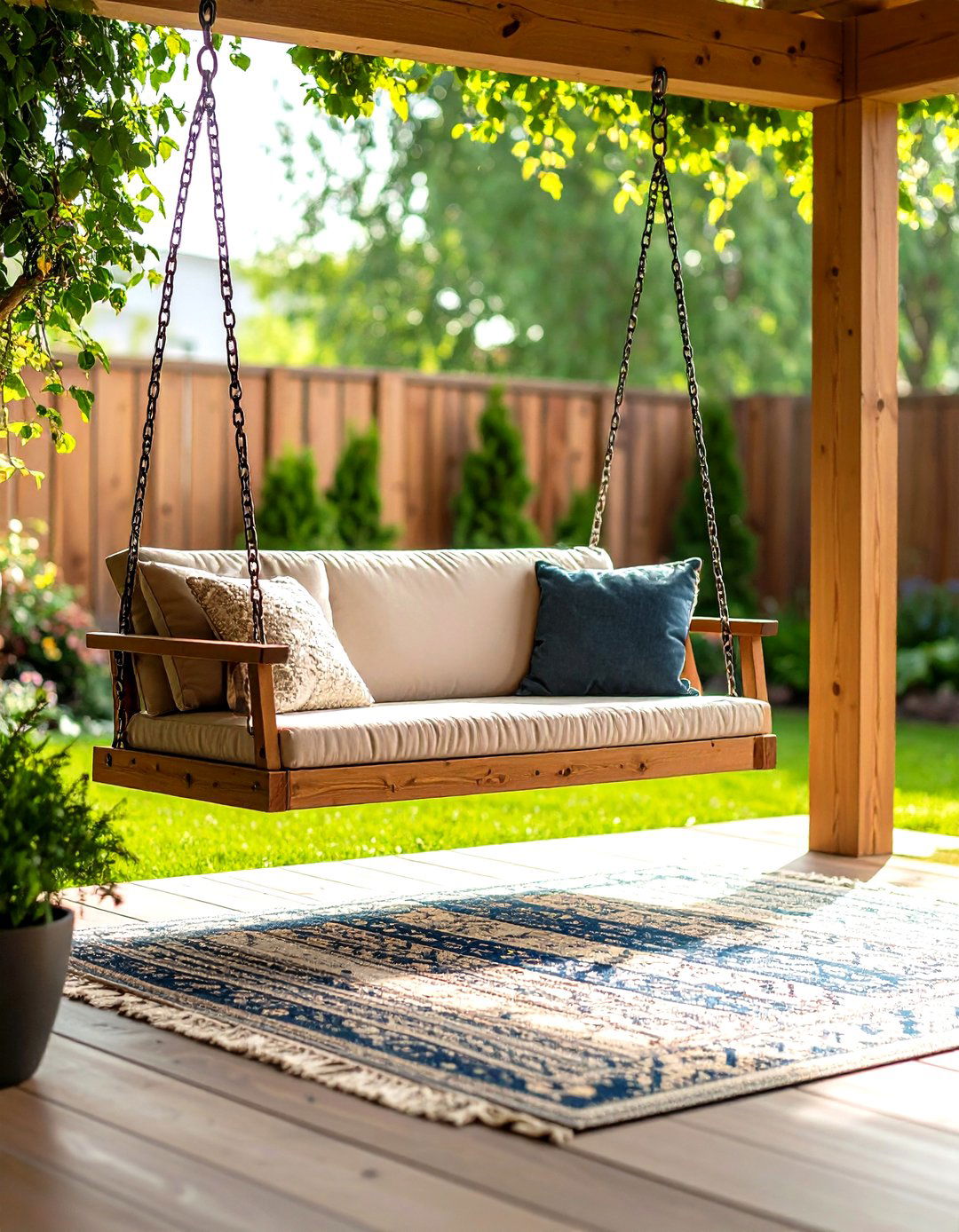
A hanging front porch swing bench turns everyday seating into gentle motion therapy. Standard pine or cypress swings typically rate for 500-plus lb once paired with 3/8-inch galvanized chains anchored into ceiling joists. Space chains 36 in. apart for balanced weight distribution, and set seat depth around 20 in. so adults can lean back comfortably. Snap-on spring clips simplify seasonal removal if storms threaten. For extra coziness, zip-tie a washable outdoor rug underfoot to soften the illusion of height.
10. Planter-End Bench with Integrated Boxes
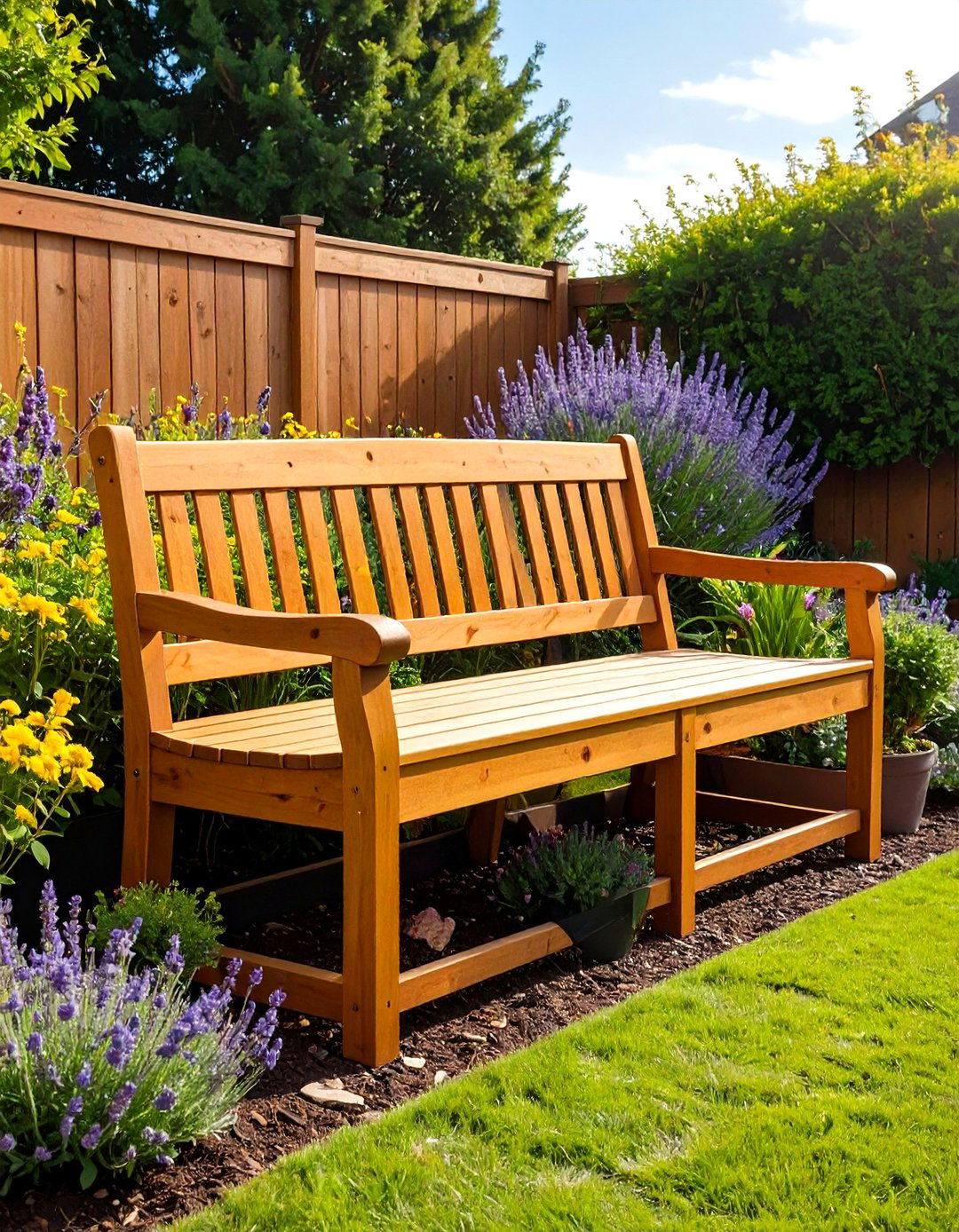
Combining greenery and seating, a planter-end front porch bench incorporates two 12×12 in. raised planters at either side, leaving a 48-in. seat span in the middle. Cedar versions finished with teak oil protect roots and bench fans alike from moisture creep. Line boxes with landscape fabric before adding soil to prevent leaks, and choose compact species like lavender or dwarf boxwood that thrive in 6–8 in. of depth. The built-in foliage offers shade for calves, infuses fragrance, and instantly frames your doorway with living color.
11. Compact Folding Front Porch Bench
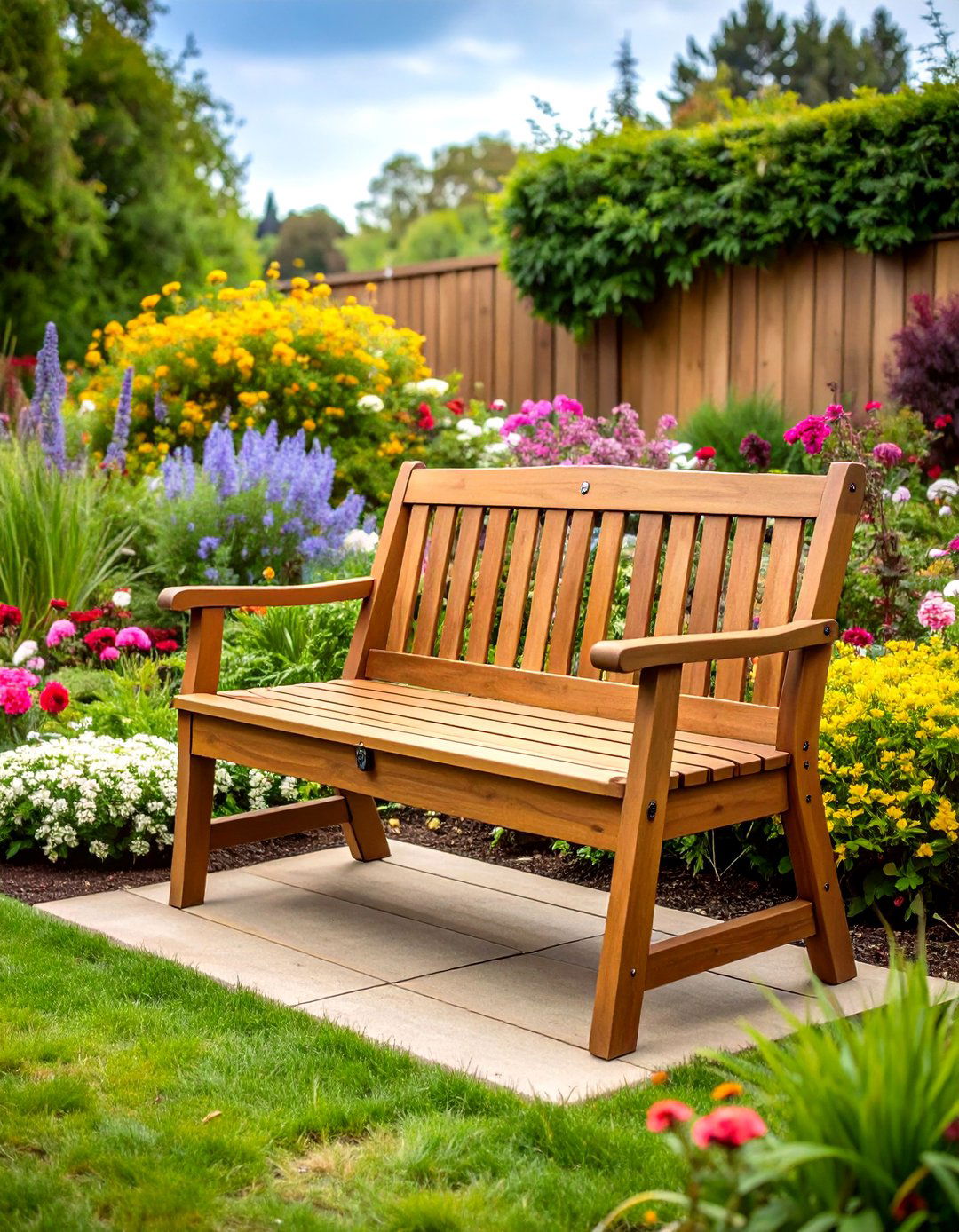
If storage is scarce, a slatted acacia folding front porch bench collapses to under 6 cm thick for stowing in a closet or car trunk. Contemporary folding designs add pin-and-slot latches beneath the seat so the frame locks solidly in the open position, resisting sway up to 300 lb. Keep hinges running smoothly with a yearly squirt of dry-film Teflon spray, and store the bench vertically to avoid trapping moisture between boards.
12. Concrete Block & Wood Plank DIY Bench

Few projects beat the affordability of a concrete-block-and-plank front porch bench: eight standard 16×8×8 in. cinder blocks stacked in two towers support three 2×6 in. cedar planks slid through the cores. Brush the blocks with masonry sealer to limit efflorescence, then attach the planks with exterior-grade construction adhesive so kids can’t dislodge them. Stain the boards charcoal gray to echo the block color and create a cohesive, modern look for less than a single store-bought bench.
13. Cushioned Porch Bench with Outdoor Fabric
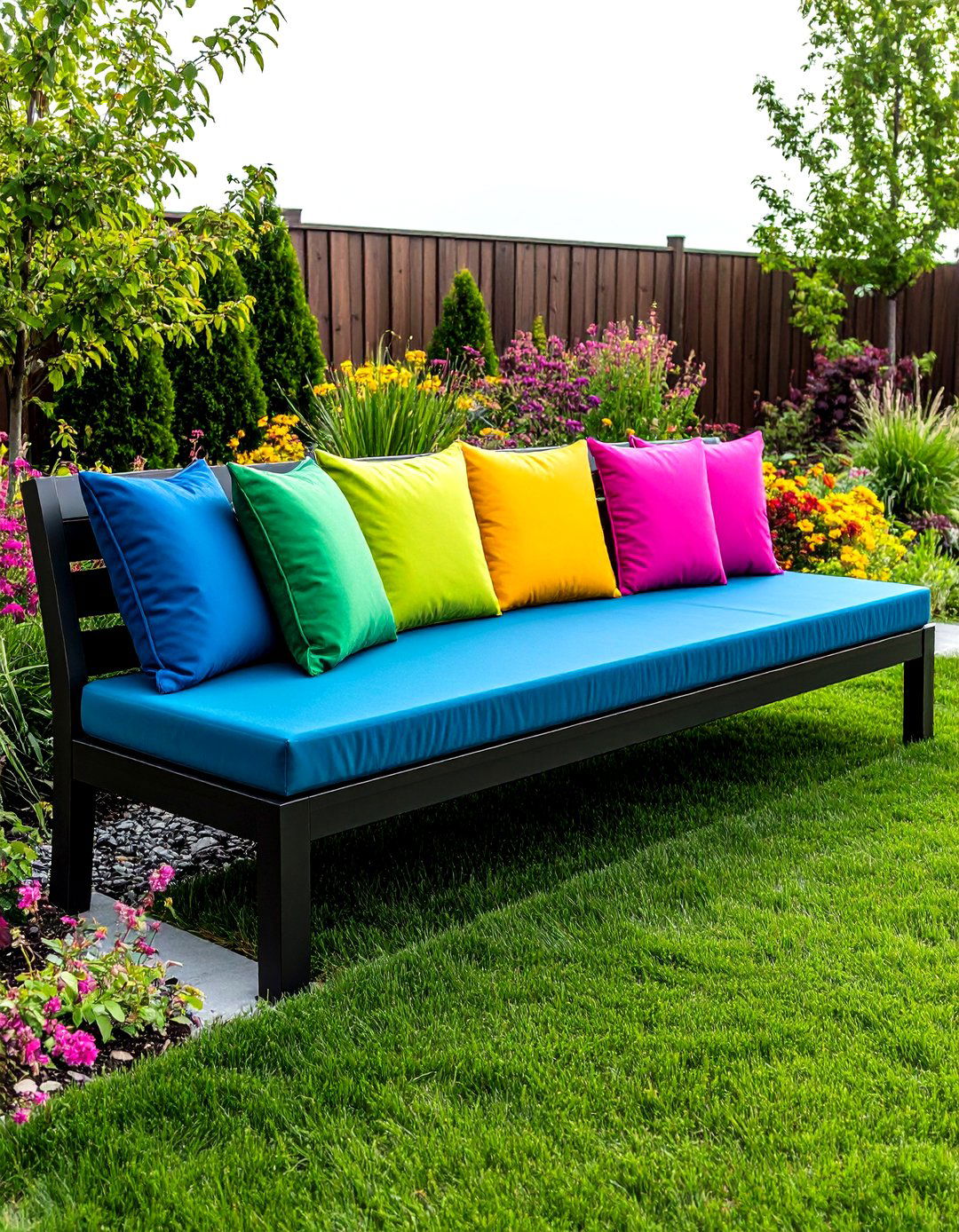
Nothing feels as inviting as a plush-cushioned front porch bench, yet cushions can harbor mildew unless cared for. Experts recommend deep-cleaning outdoor fabrics twice yearly—early spring and late fall—using mild soap and a soft brush. Pick solution-dyed acrylic covers that resist UV bleaching and unzip for easy laundering. Underneath, quick-dry open-cell foam drains water fast after a rainstorm. Tie cushions to the bench frame with discreet snaps so gusts won’t whisk them away, and rotate them monthly to even out sun exposure.
14. Industrial Pipe-Frame Front Porch Bench
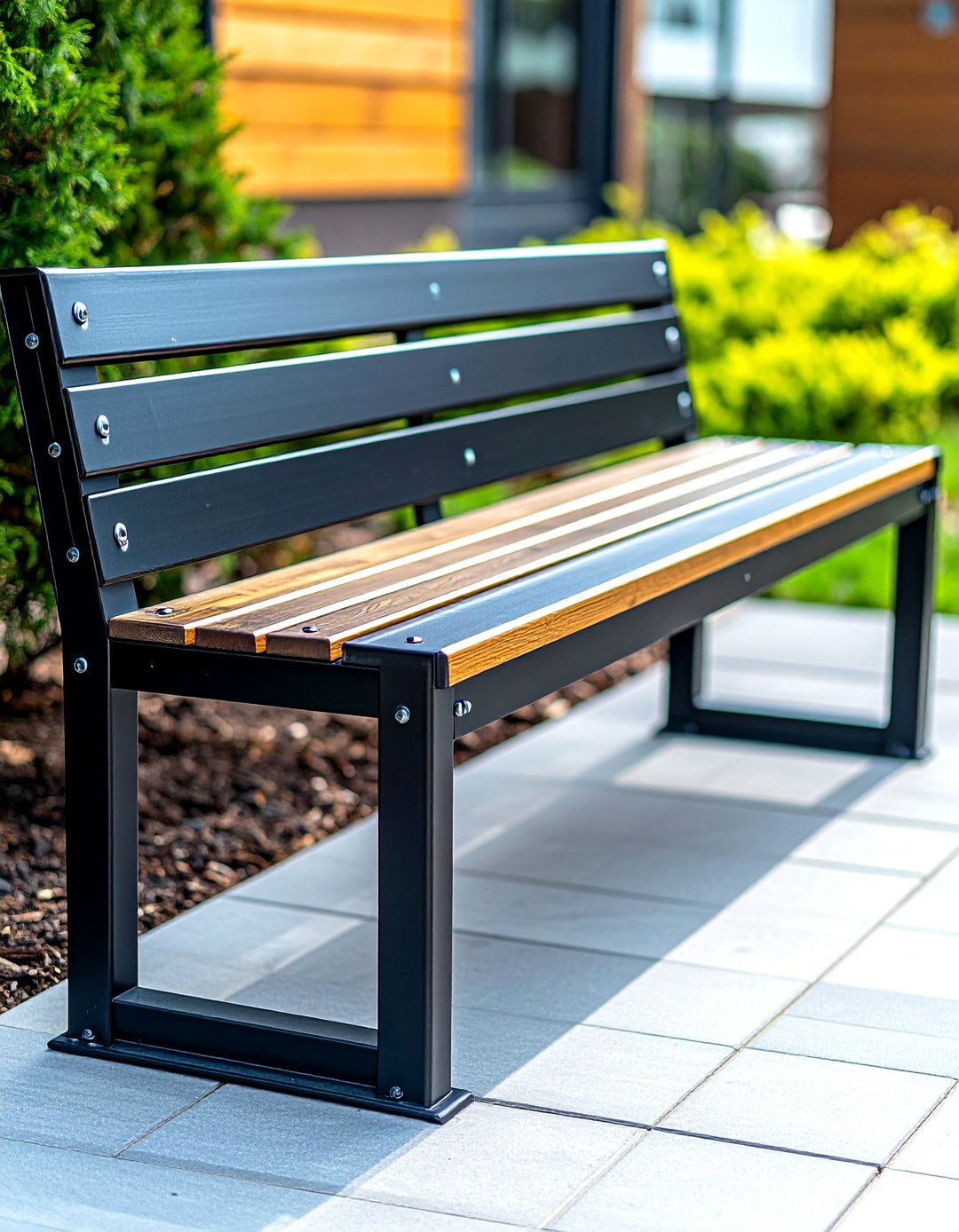
Galvanized steel pipe paired with reclaimed spruce boards yields an industrial pipe-frame front porch bench that costs little but commands attention. DIY makers often pre-assemble each leg with ¾-in. floor flanges for easy bolting to the seat, ensuring rock-solid stability. Apply matte black spray enamel to conceal pipe markings and coat boards with water-based matte poly for contrast. For an extra industrial nod, stencil subtle warehouse numbers along the seat edge and finish with rivet-head screws.
15. Live-Edge Slab Front Porch Bench
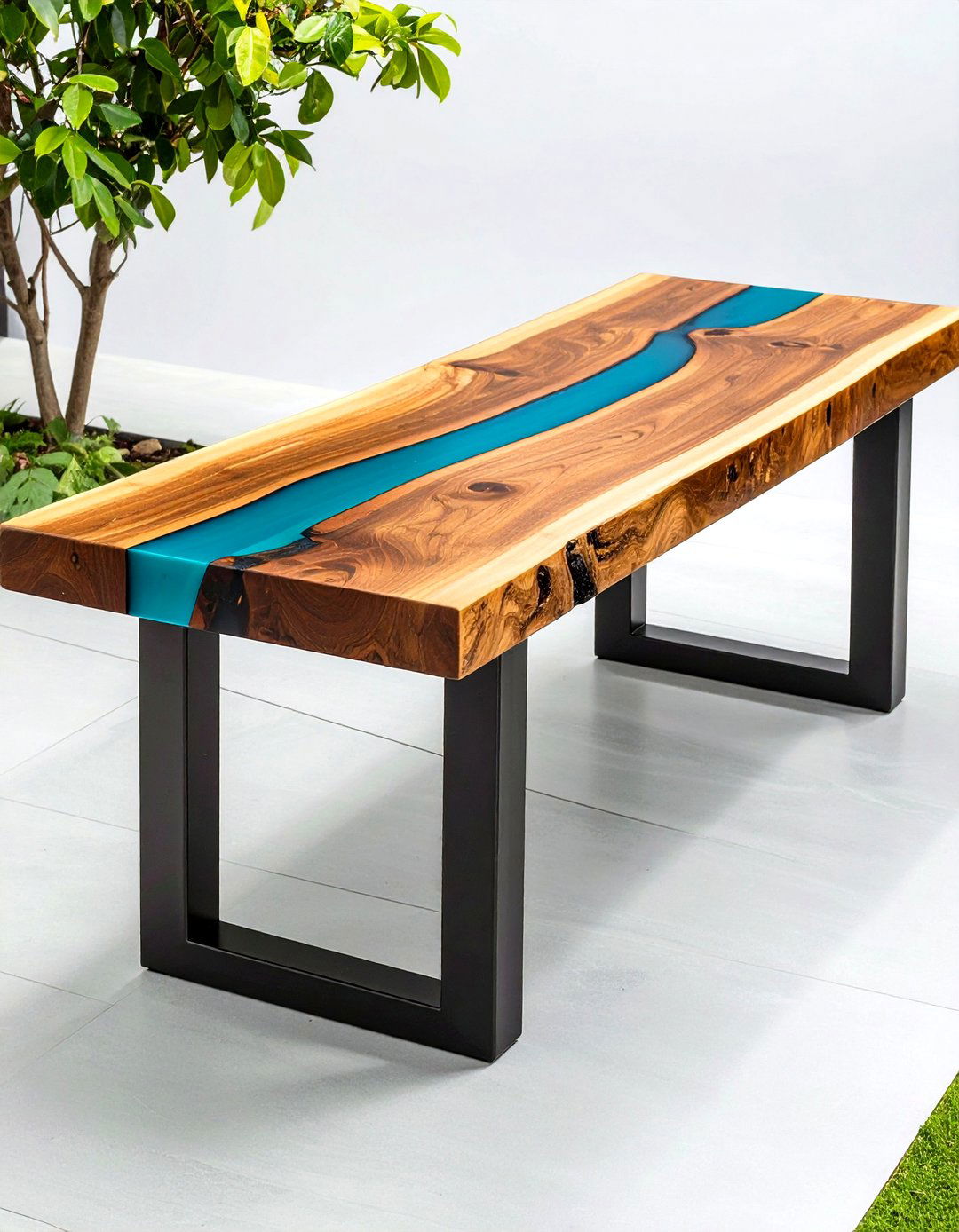
A live-edge slab front porch bench lets nature’s contours set the design. Seal cracks with clear epoxy, then build up three coats of marine-grade spar varnish, which remains flexible and blocks UV rays better than indoor finishes. Expect to scuff-sand and recoat every two to three years—small maintenance that pays off in decades of eye-catching grain. Pair the organic seat with minimalist block legs so the slab stays center stage.
16. Wicker Rattan Loveseat Bench
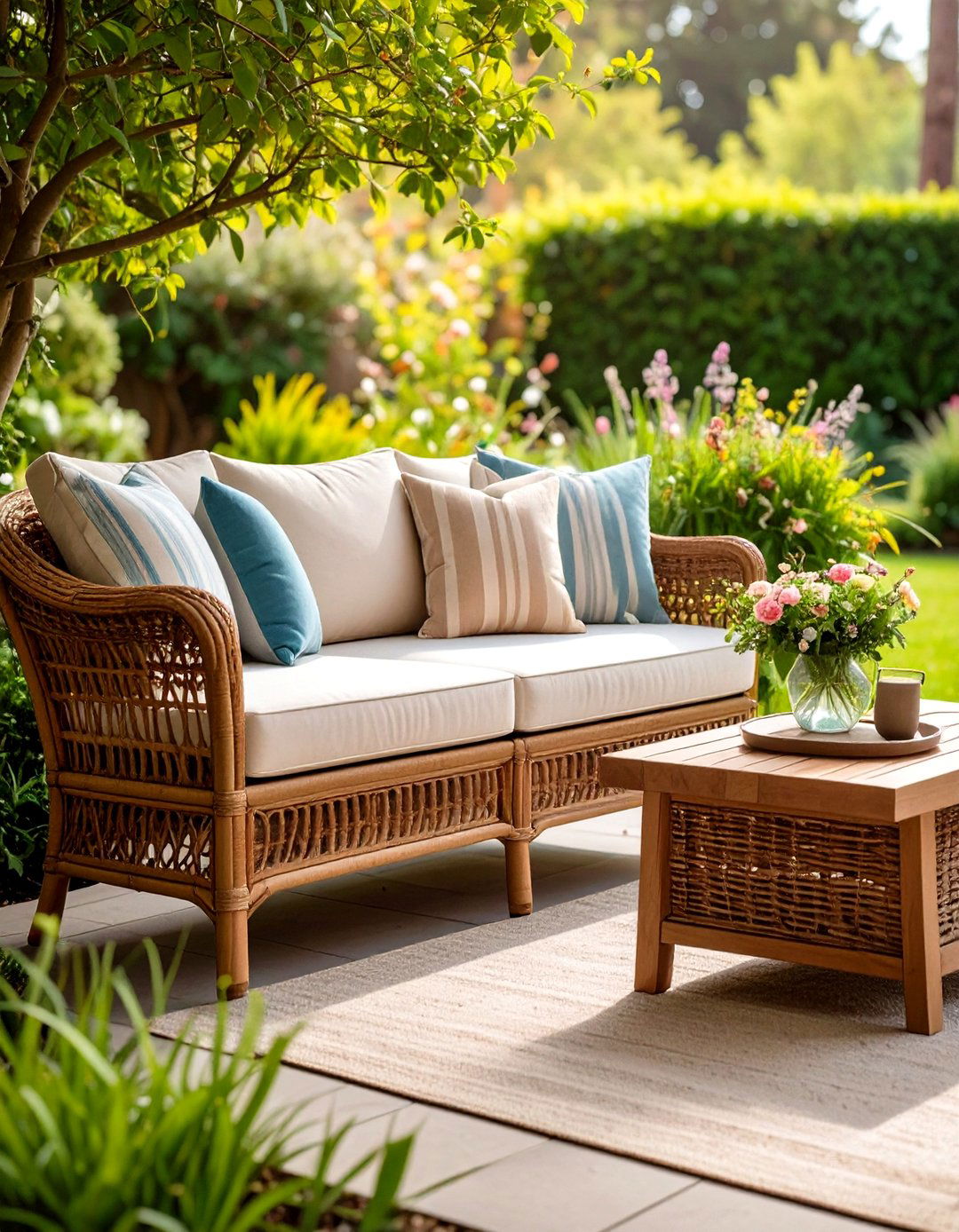
A wicker rattan front porch bench conjures breezy resort vibes but needs the right upkeep. Specialists advise scrubbing mildew with diluted oil-based soap, then letting the bench dry thoroughly in sunlight to prevent sagging strands. Choose all-weather resin wicker if your porch is fully exposed; its UV-stabilized fibers won’t crack as natural rattan can. Match the bench with neutral-striped pillows, and consider a small teak side table to balance textures.
17. Mosaic-Tile-Top Accent Bench

Add artistry by topping a sturdy pine or metal frame with a mosaic-tile surface sealed in outdoor grout. Home hobbyists often reuse bathroom tiles to craft bold patterns, then finish with a penetrating sealer that wards off freeze-thaw damage. Tilt the bench slightly—a 2 % slope—so rainwater rolls off instead of pooling on the tiles, and select frost-rated porcelain for durability. The colorful seat doubles as porch sculpture and hides dirt better than plain wood.
18. Solar-Lit LED Front Porch Bench
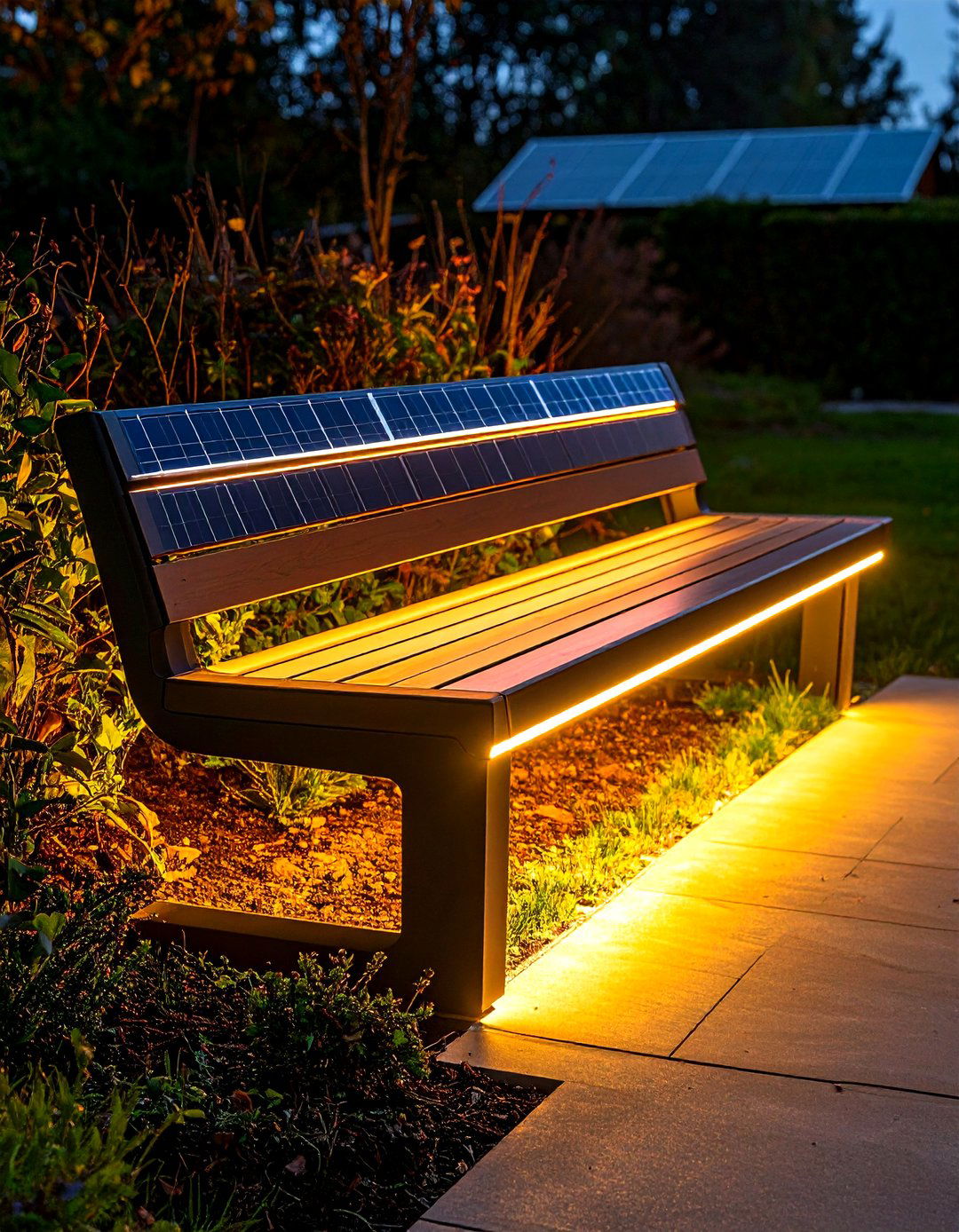
Owing to integrated furniture lighting trends, benches now hide LED strips under the seat lip for nighttime glow while sipping free solar power via discreet panels. Choose warm-white 3000 K strips for inviting ambiance, and specify weatherproof IP67-rated housings to survive storms. Motion sensors can trigger the lights only when someone approaches, saving battery life. For installation, route wiring through a rear leg to keep cords invisible and child-safe.
19. Boldly Painted Statement Front Porch Bench
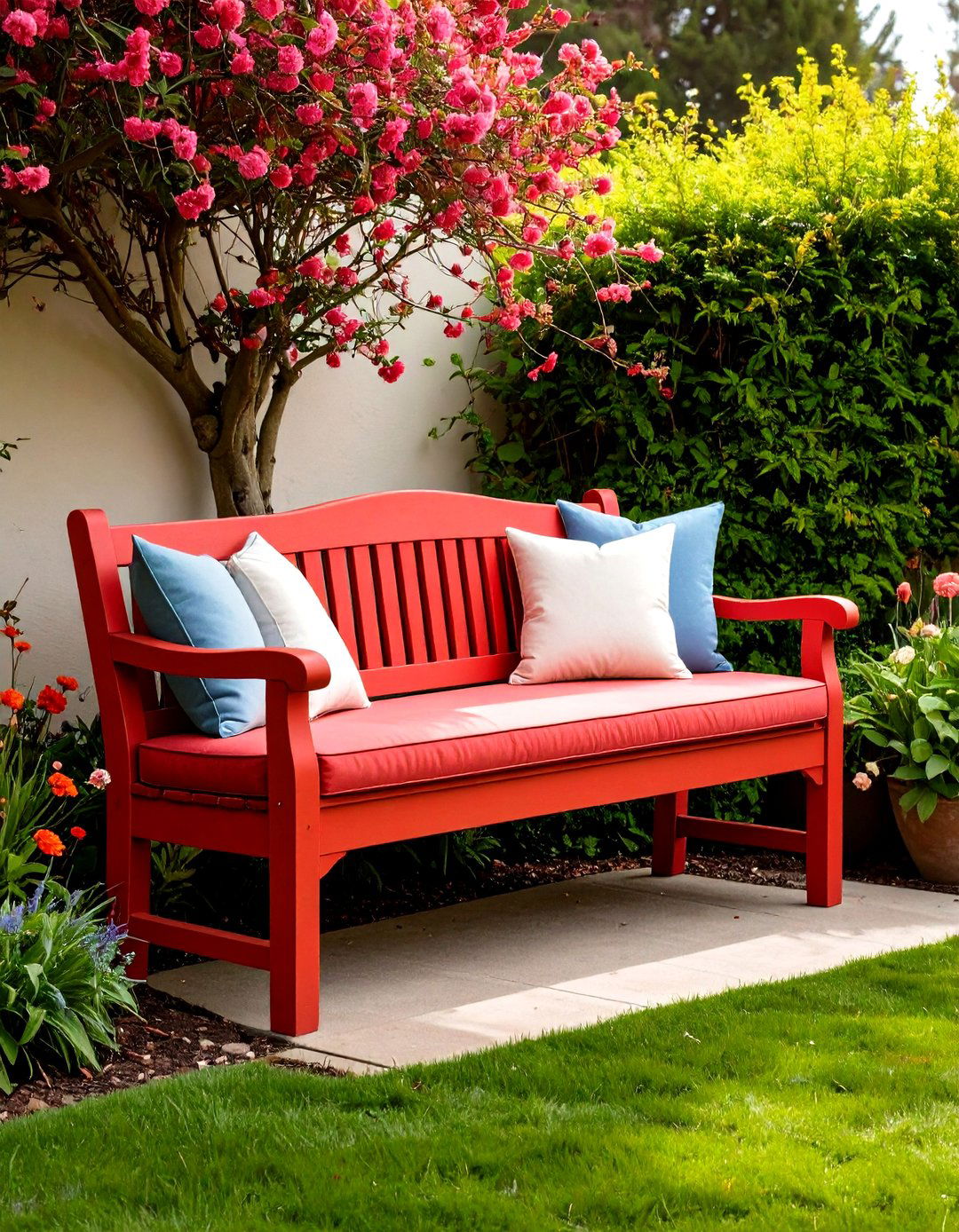
Color psychology is shaking up porch seating, with outdoor trend forecasts encouraging daring hues—think tomato red or deep teal—that pop against neutral siding. Use exterior primer followed by two coats of 100 % acrylic enamel for fade resistance, and lightly sand between coats for silky smoothness. After painting, maintain the finish by hosing the bench monthly to remove pollen, which can dull bright colors over time. Accessorize with monochrome cushions so the vivid bench remains the focal point.
20. Modular Sectional Porch Bench Pieces
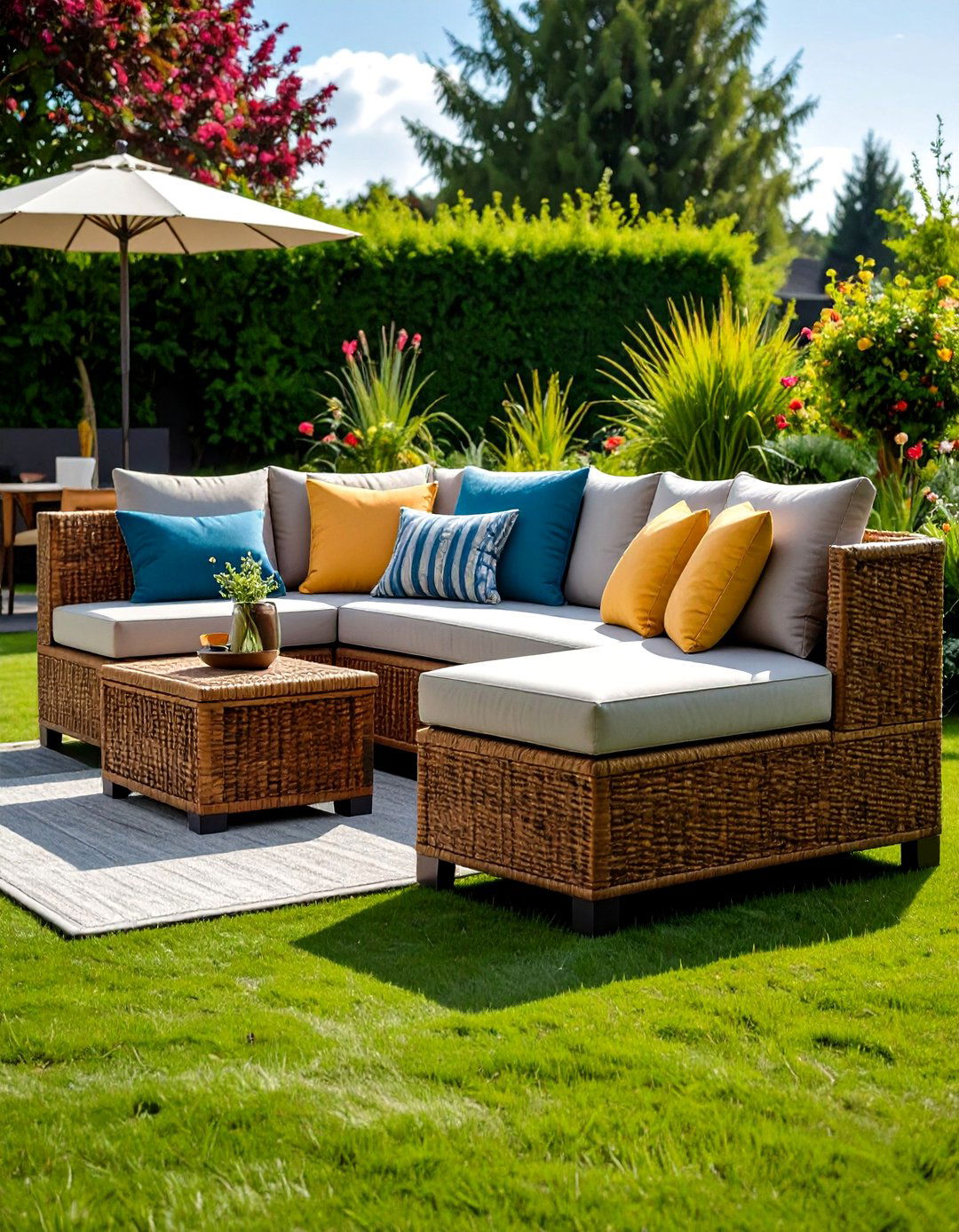
Finally, a modular sectional front porch bench lets you rearrange seating for solo coffee moments or larger gatherings. Lightweight resin-wicker modules clip together, and most sets ship with fast-dry cushions plus hidden levelers for uneven deck boards. Because each piece weighs under 15 kg, one person can reconfigure the layout without strain. Store unused sections under a bench cover during the off-season to extend fabric life and keep cushions fresh.
Conclusion:
Whether you favor heirloom hardwoods, tech-powered lighting, or space-saving fold-ups, the right front porch bench balances comfort, durability, and personality. Paying attention to materials, protective finishes, and routine care ensures every bench idea—classic or cutting-edge—remains a welcoming perch for years of sunsets, neighbor chats, and quiet reflection.


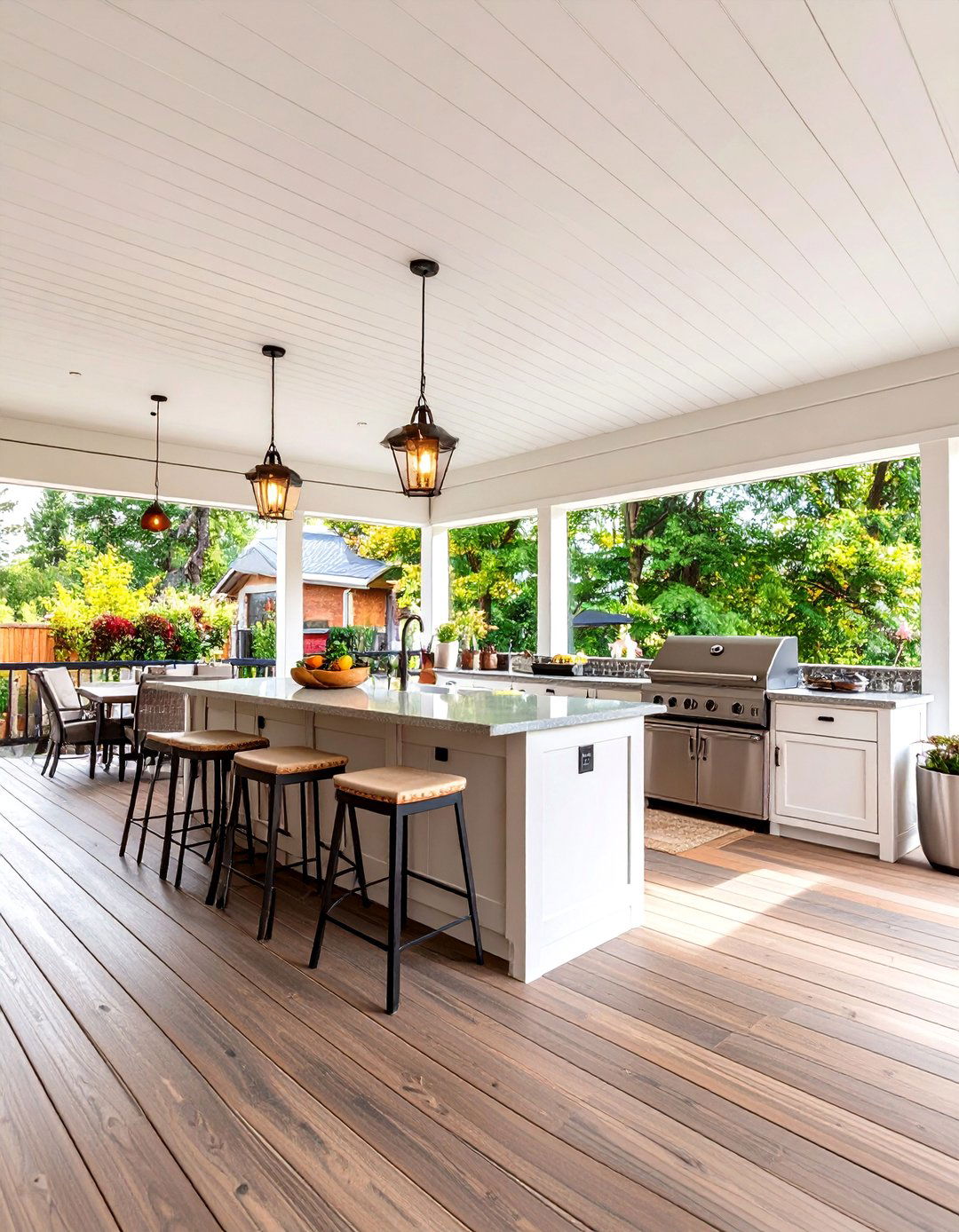

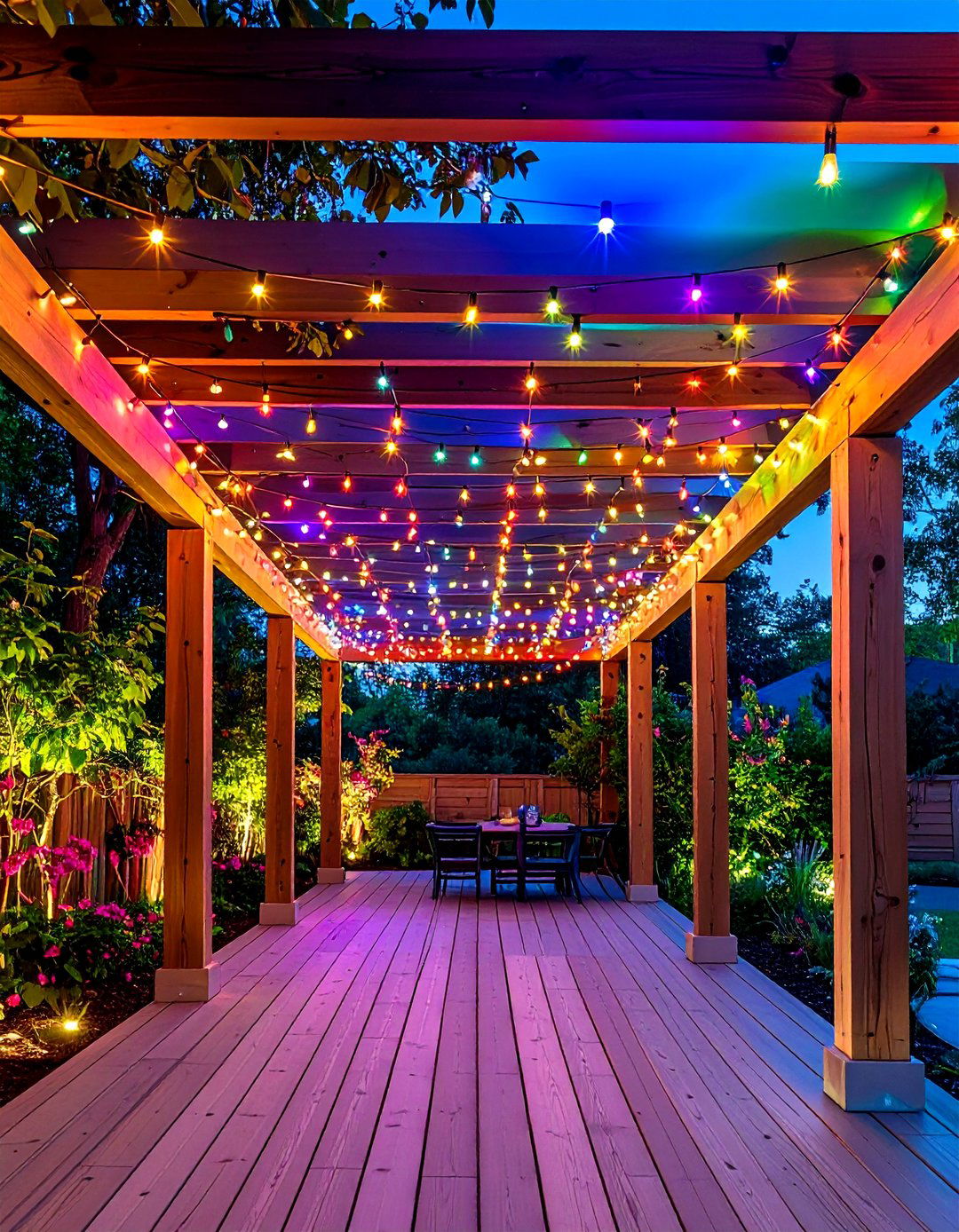
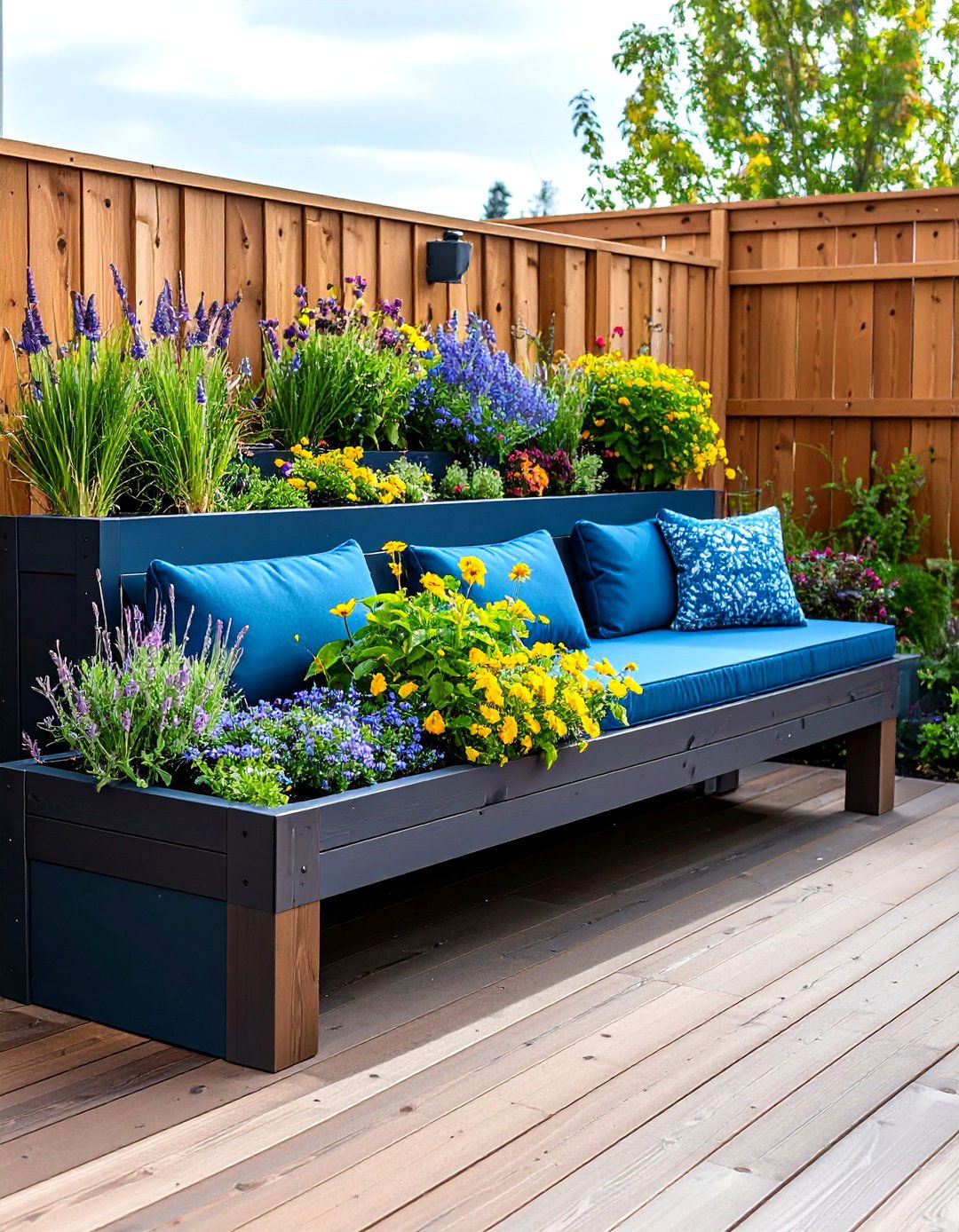
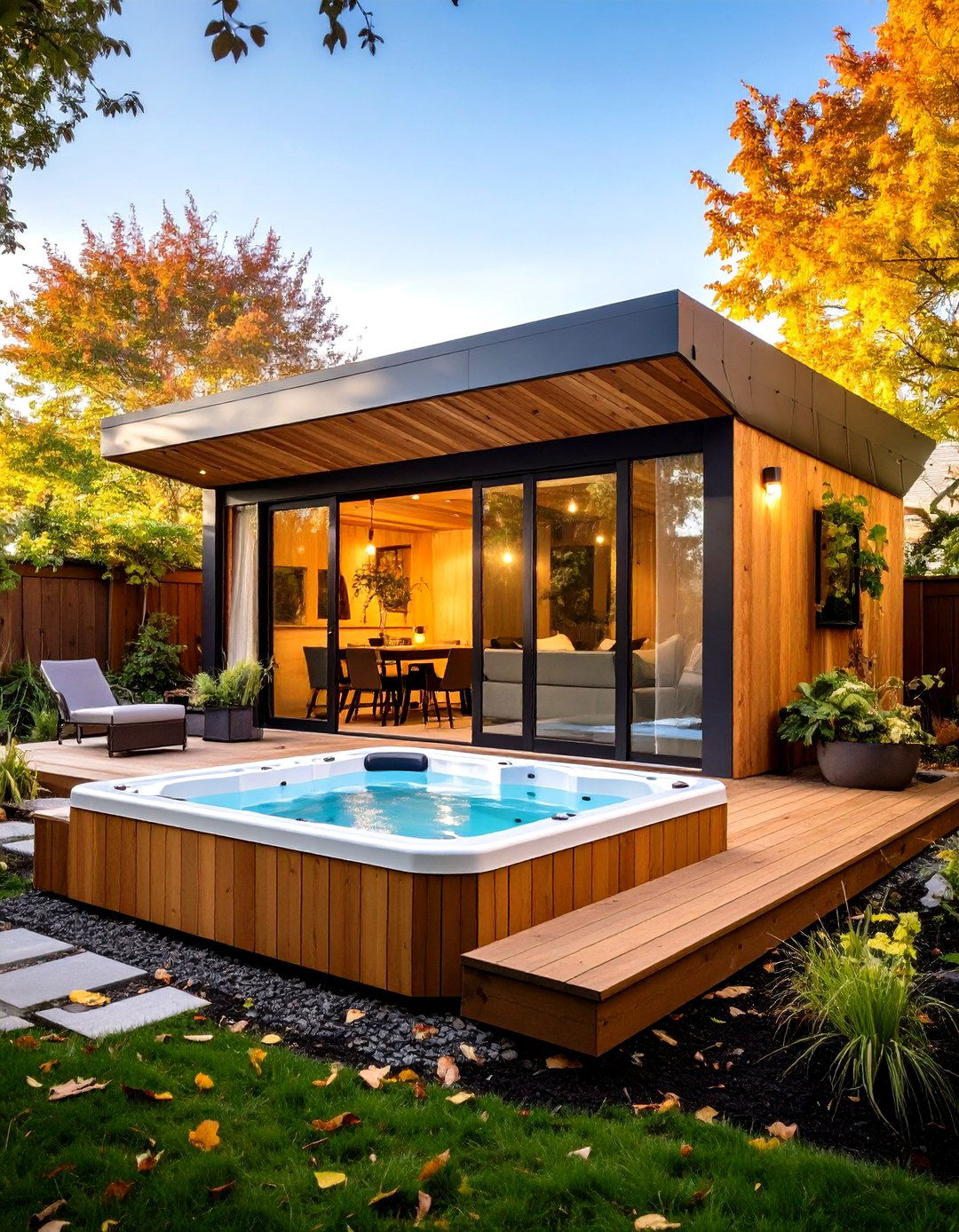

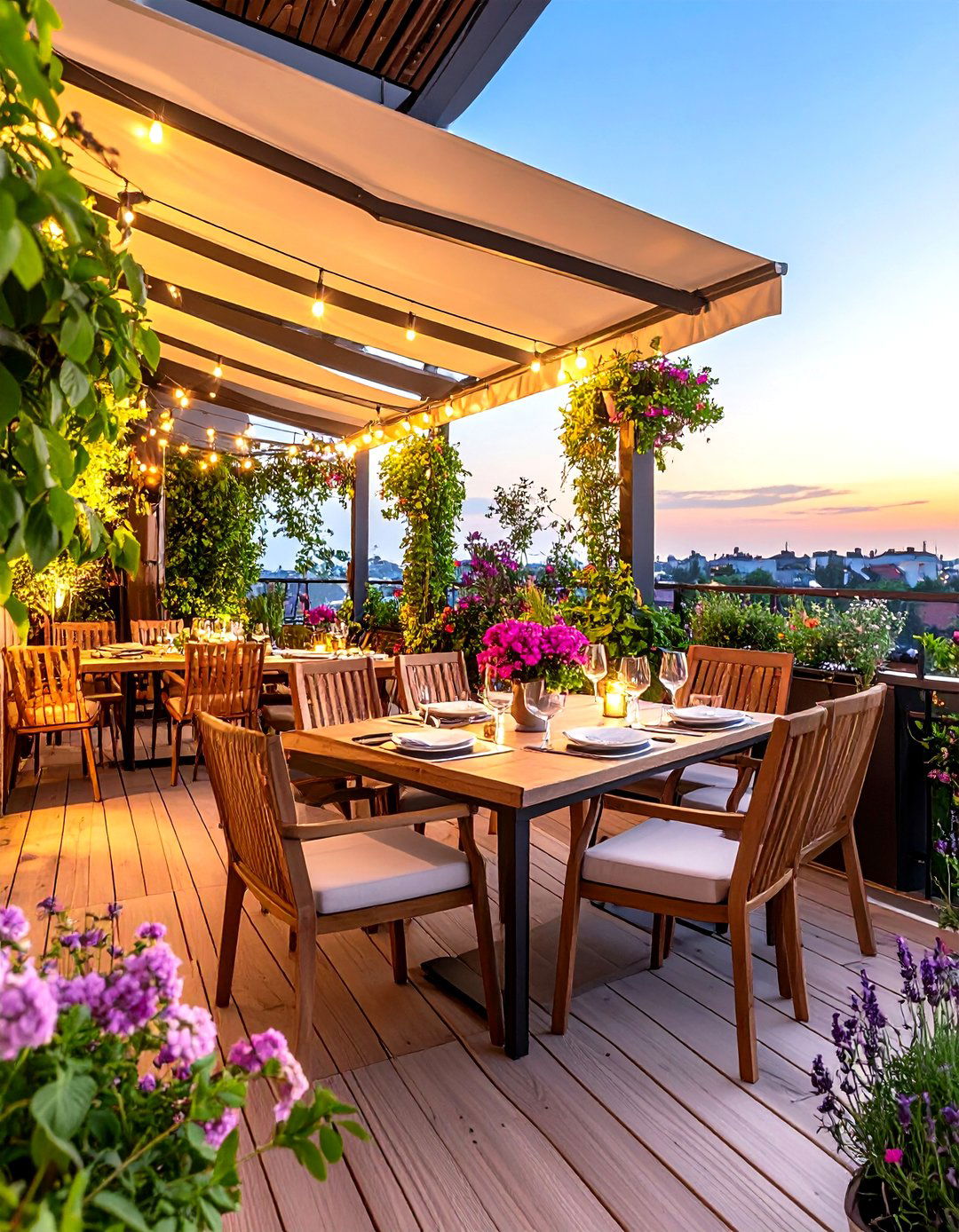
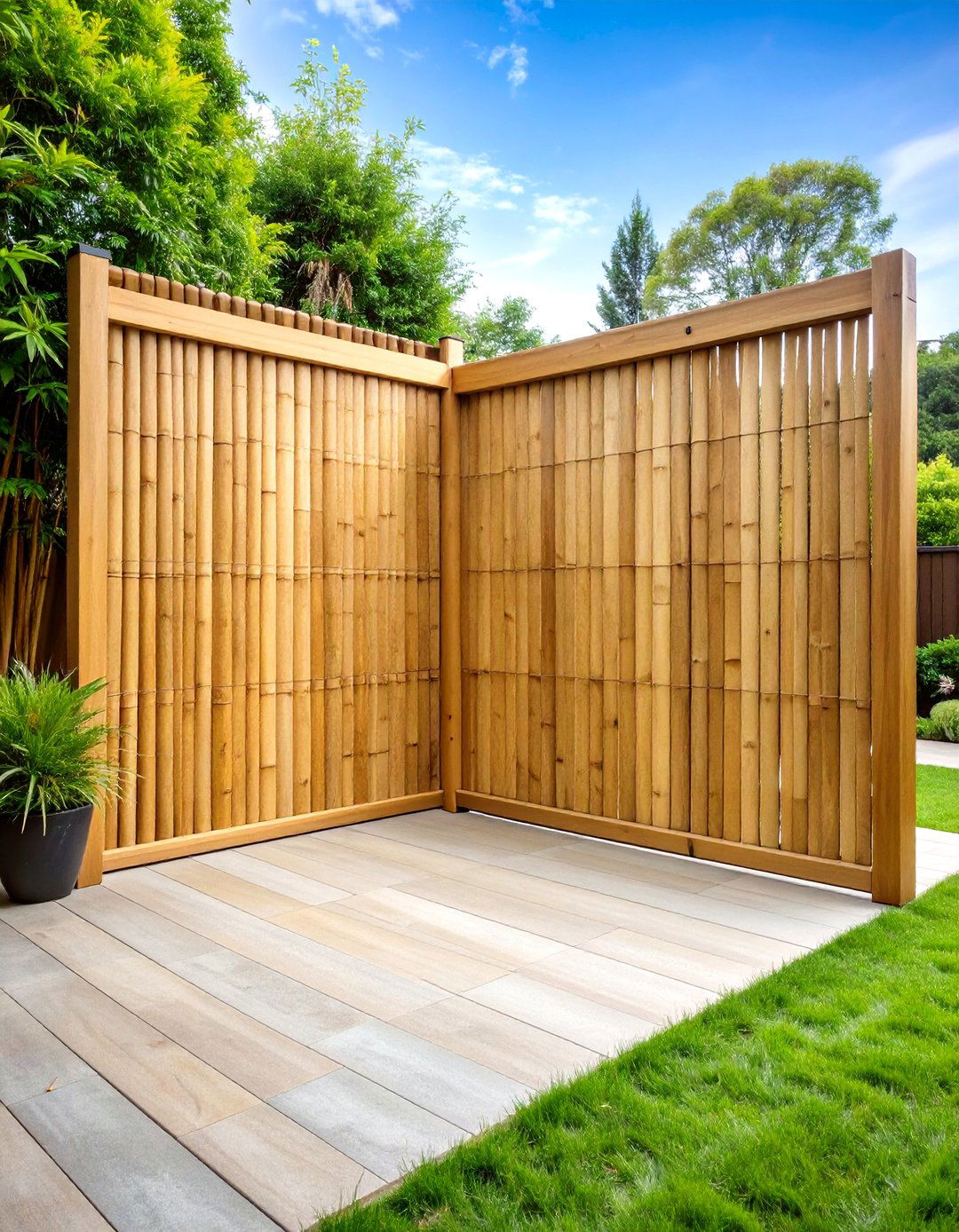
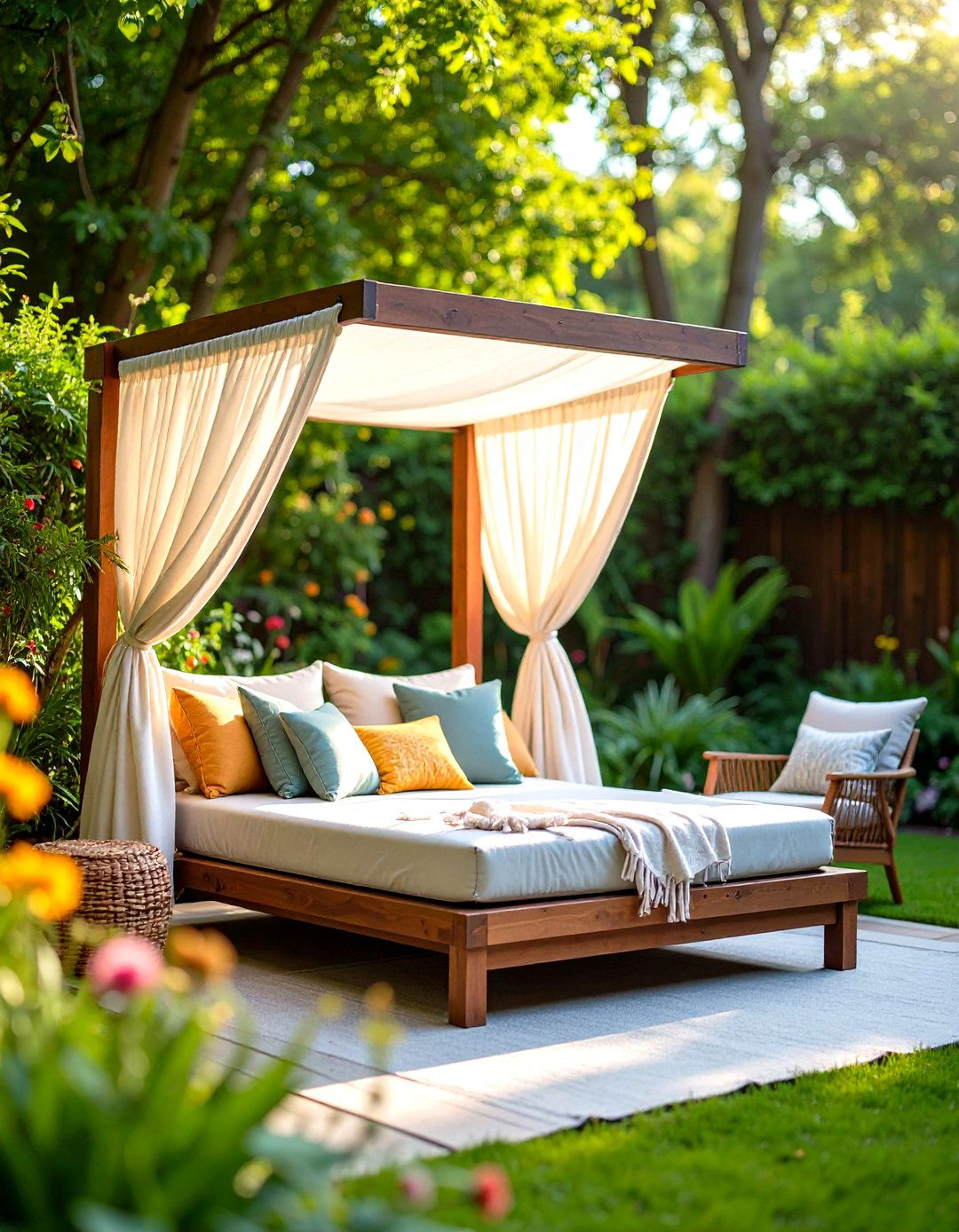
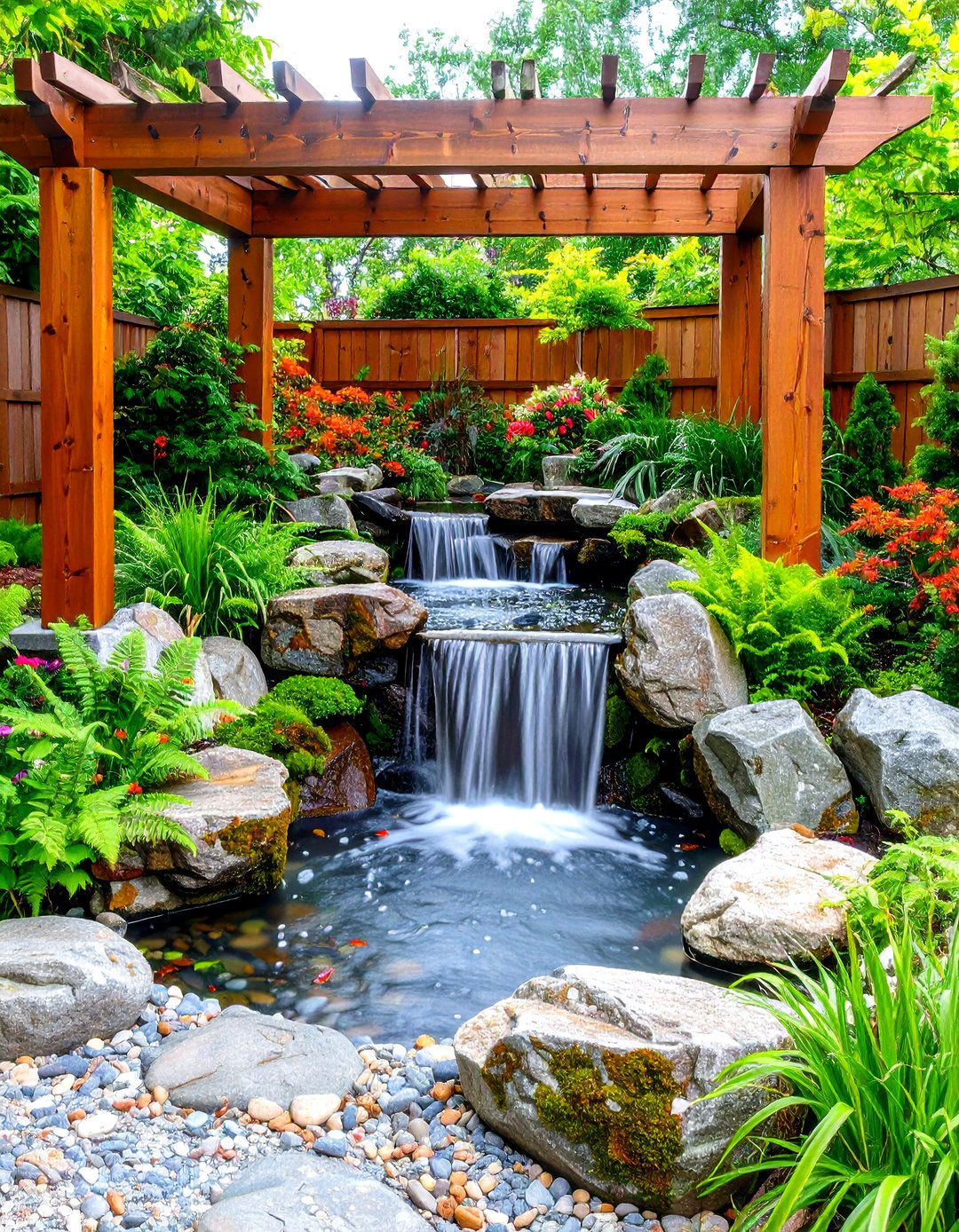
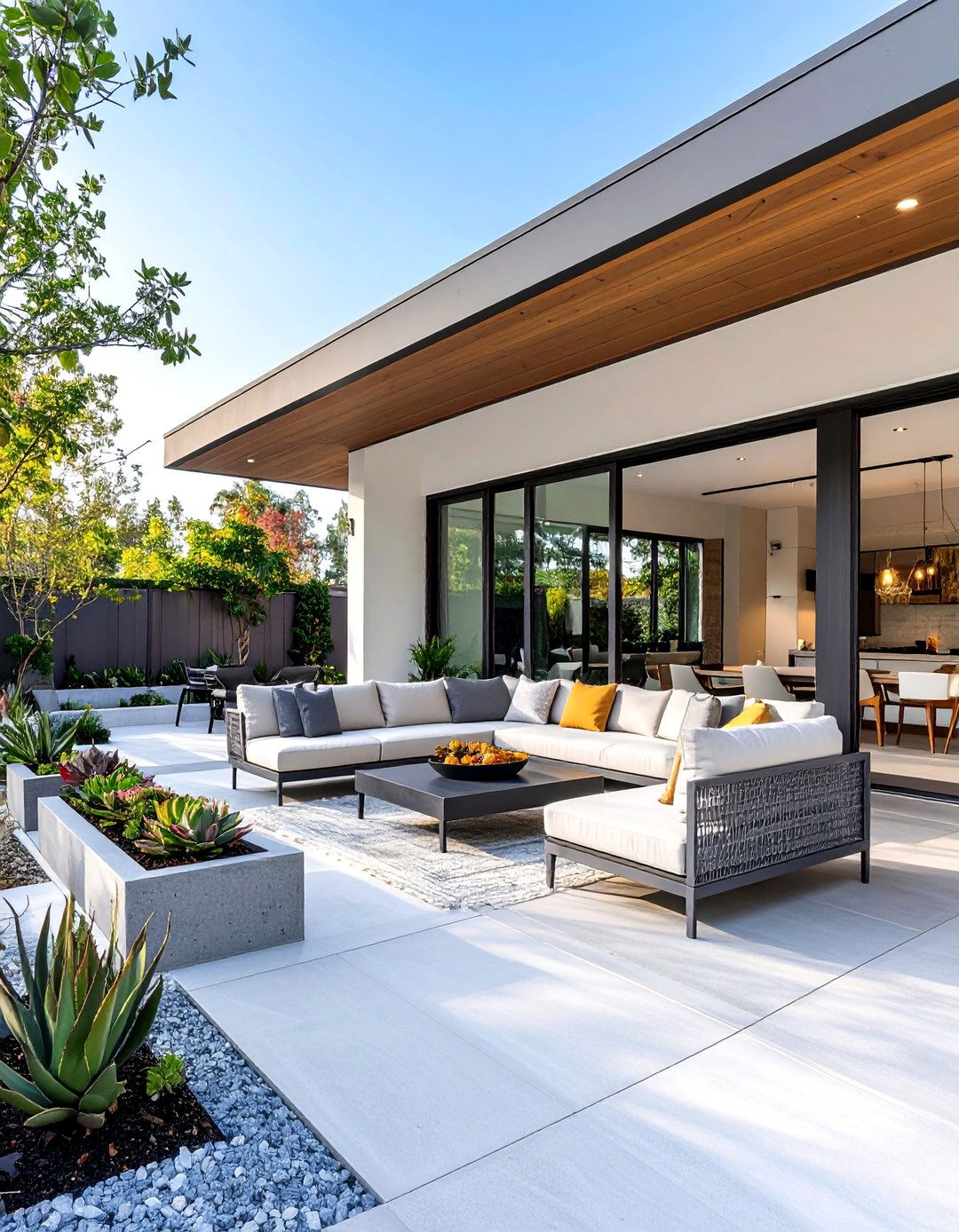

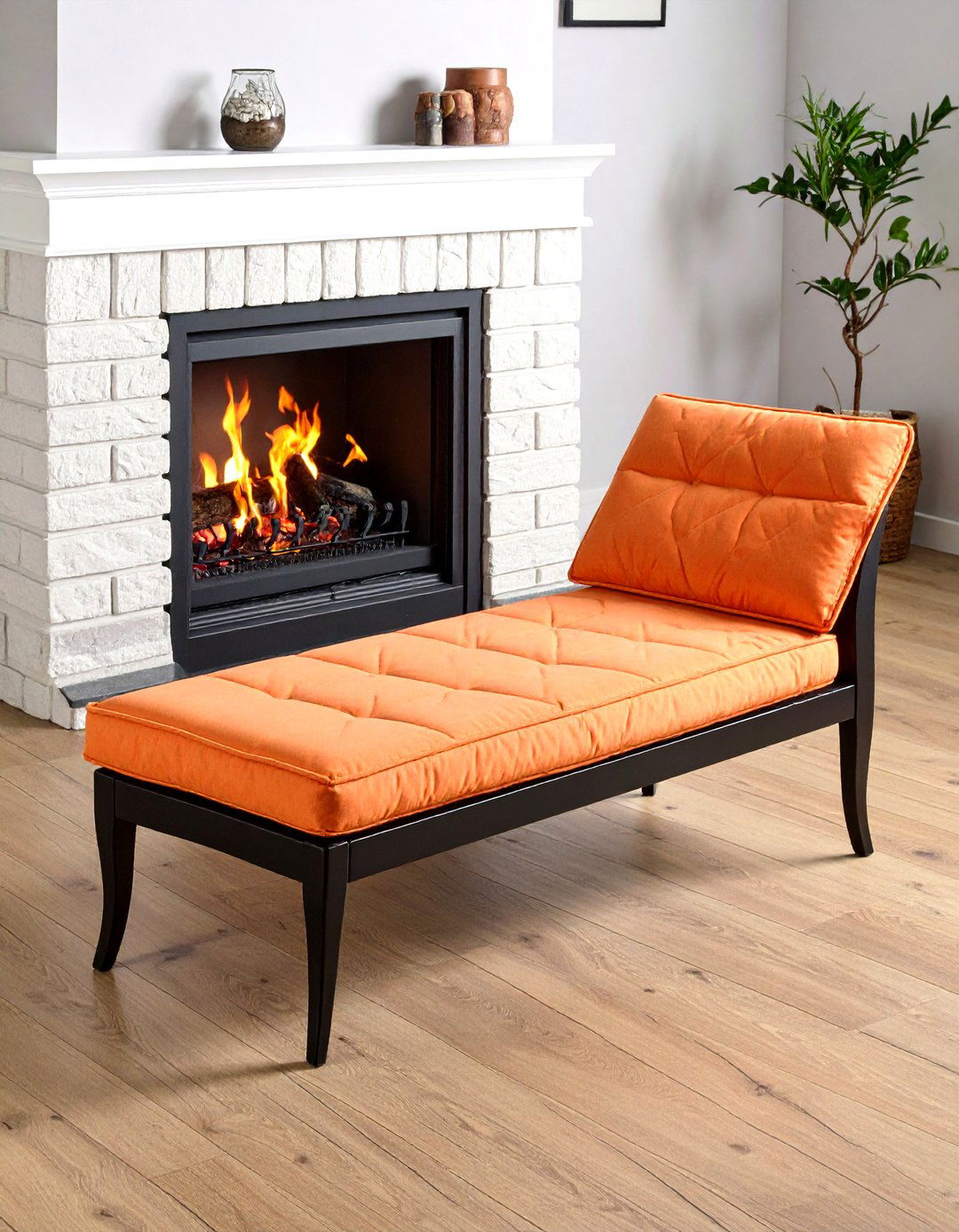
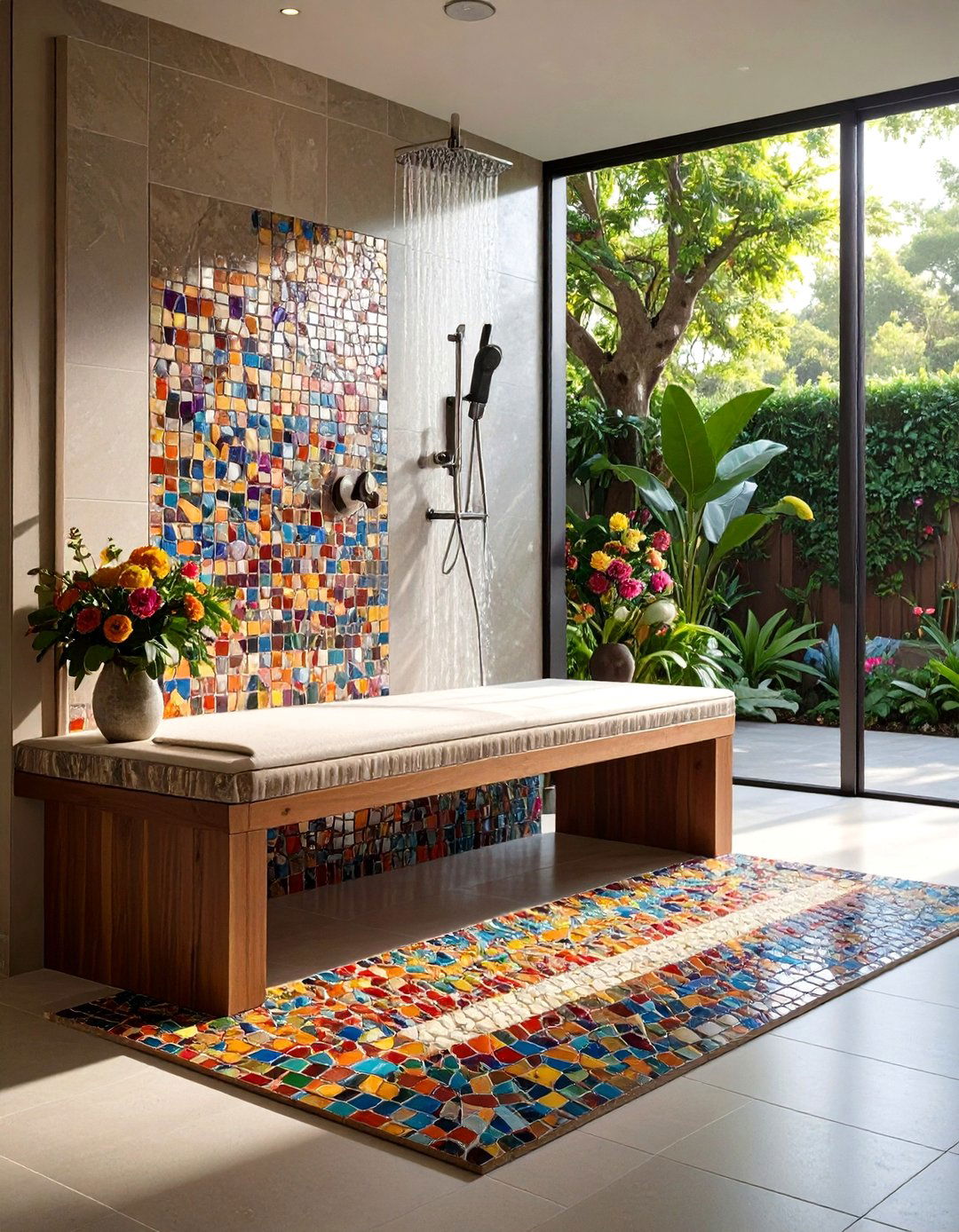
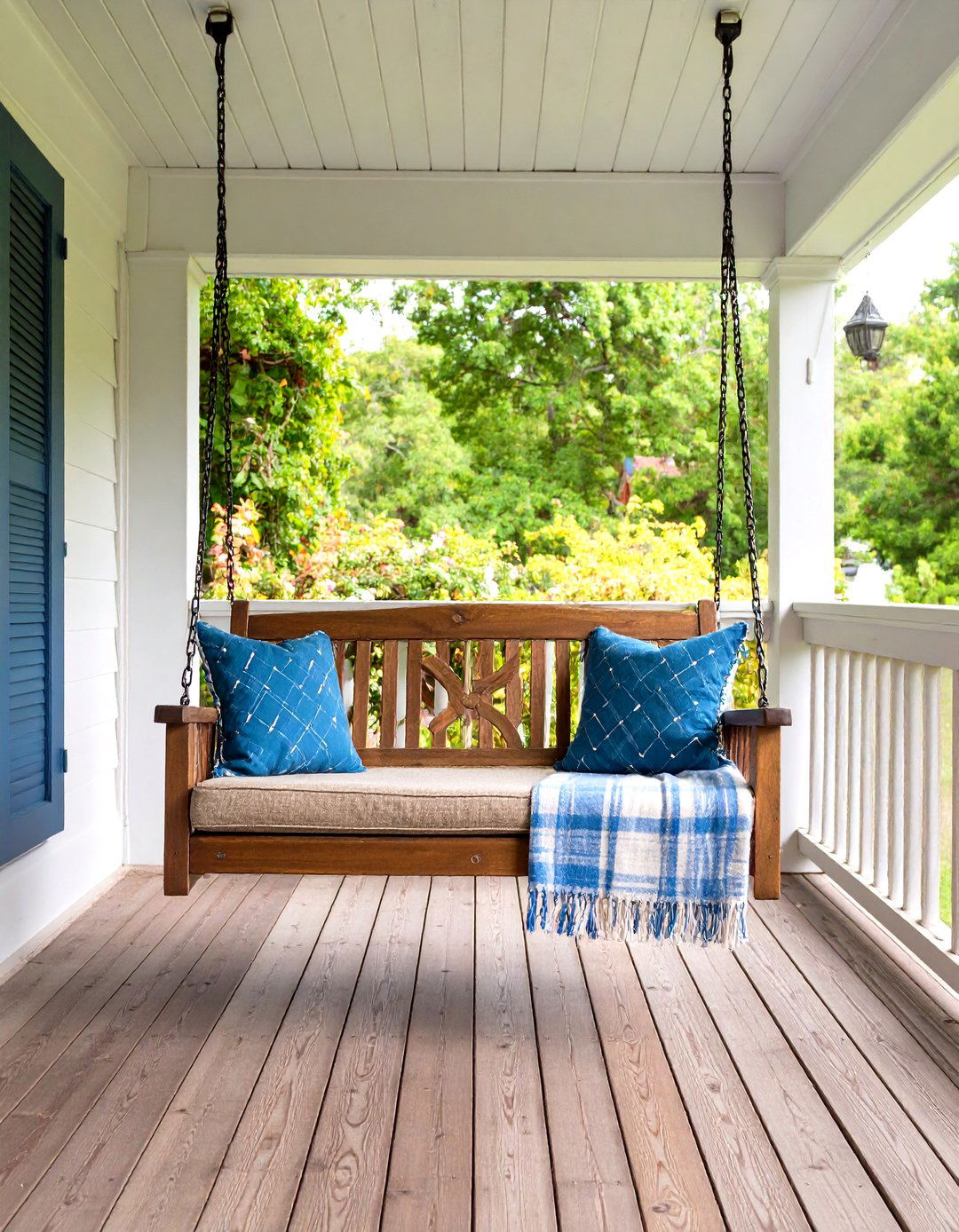
Leave a Reply